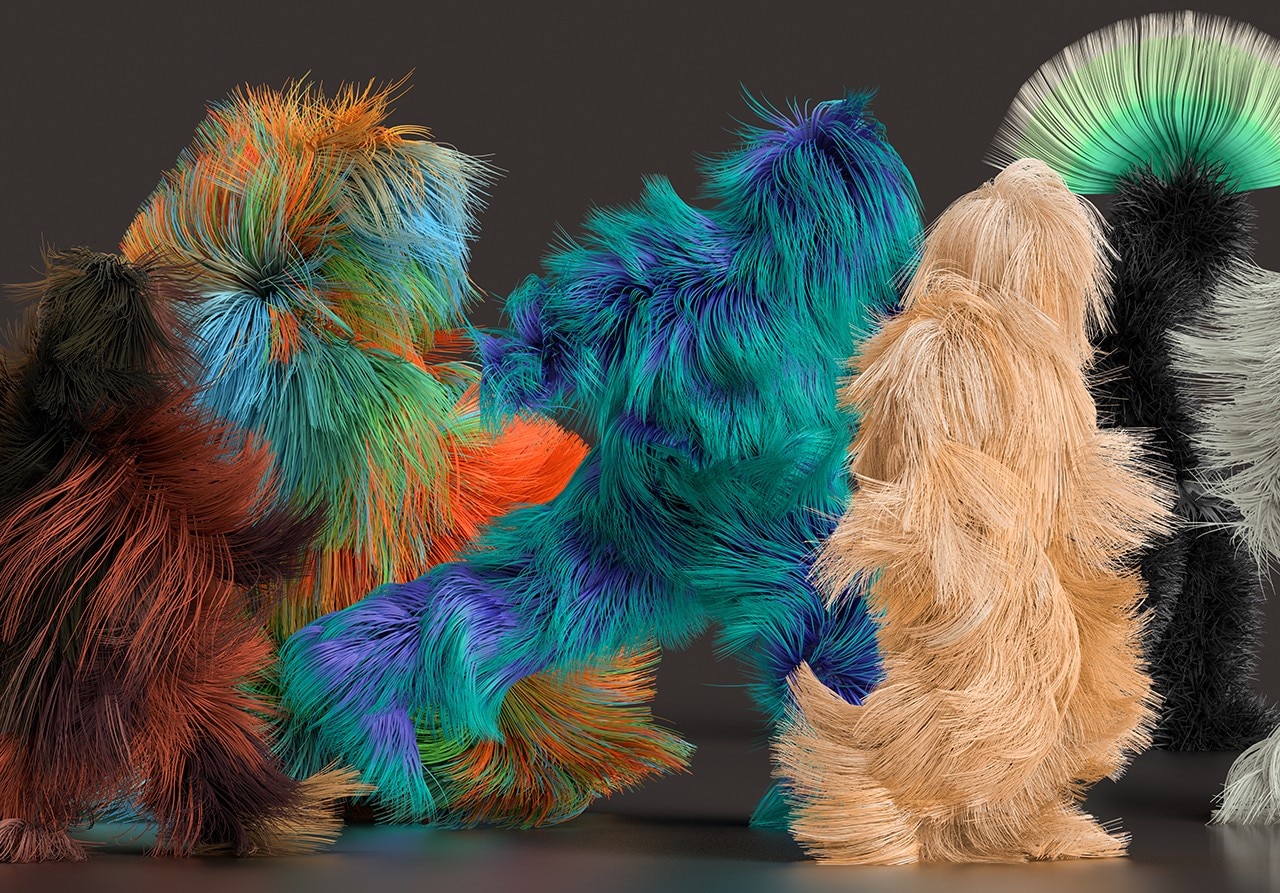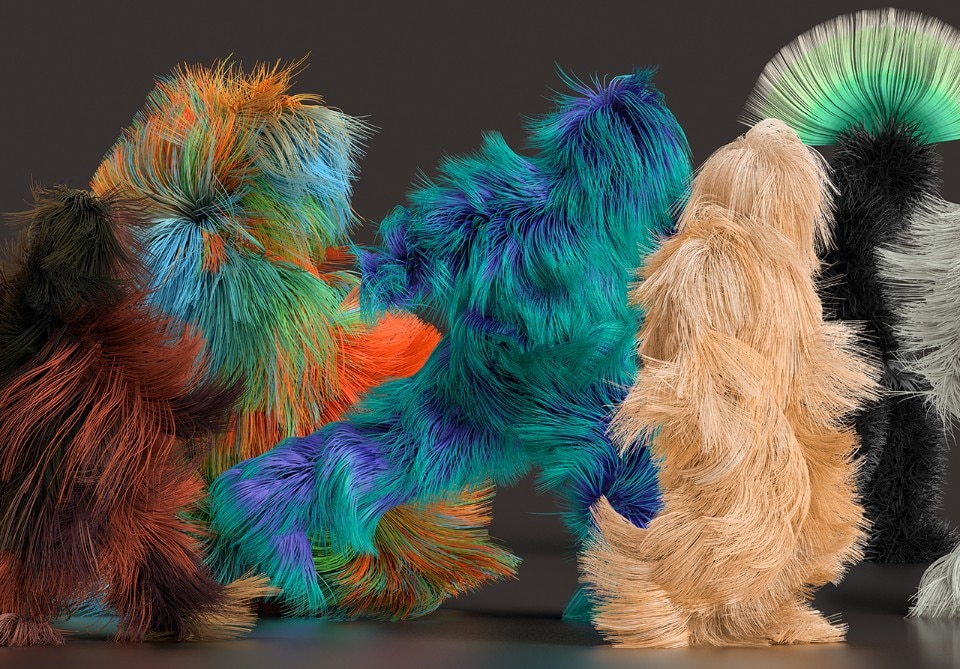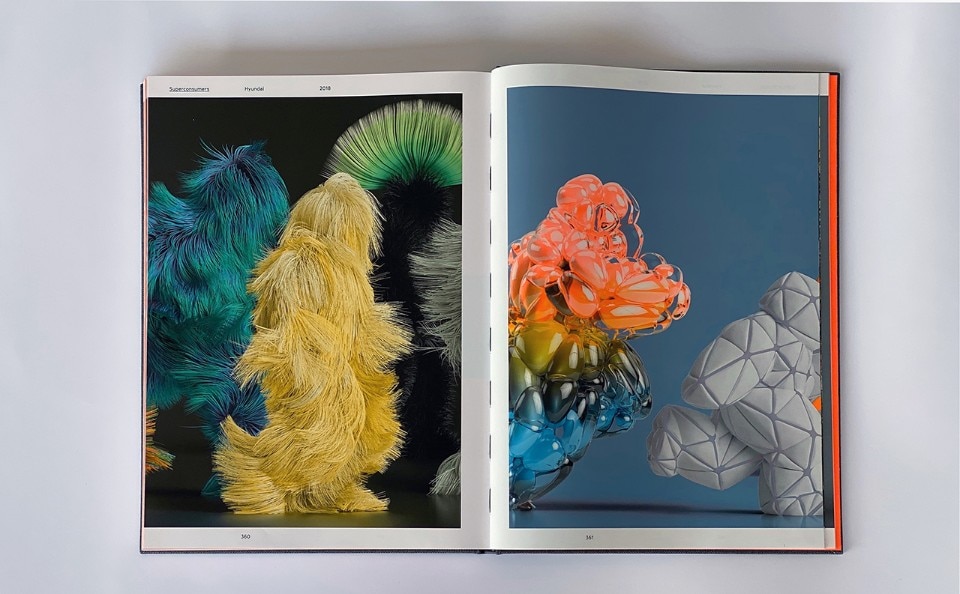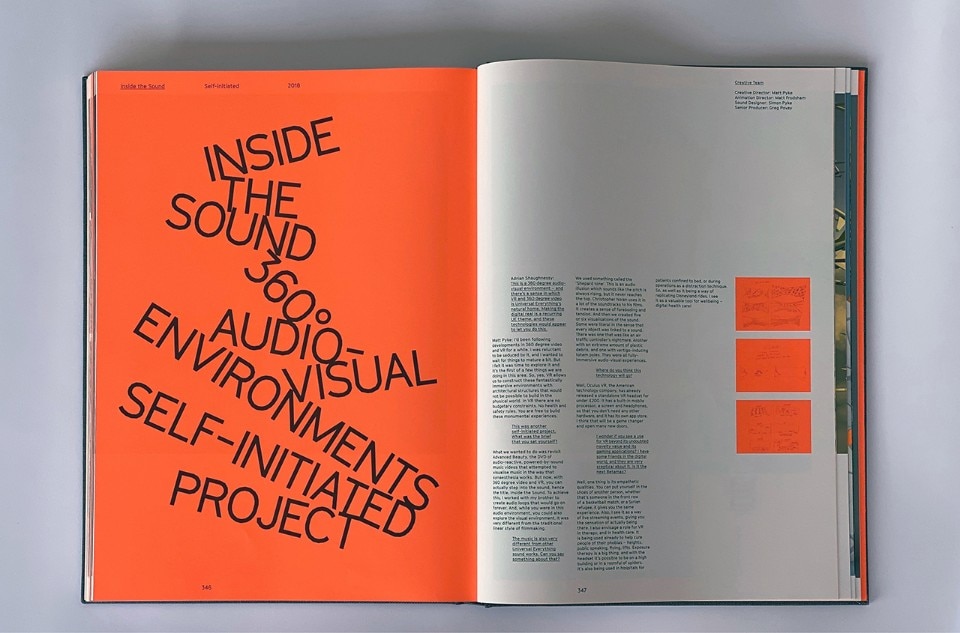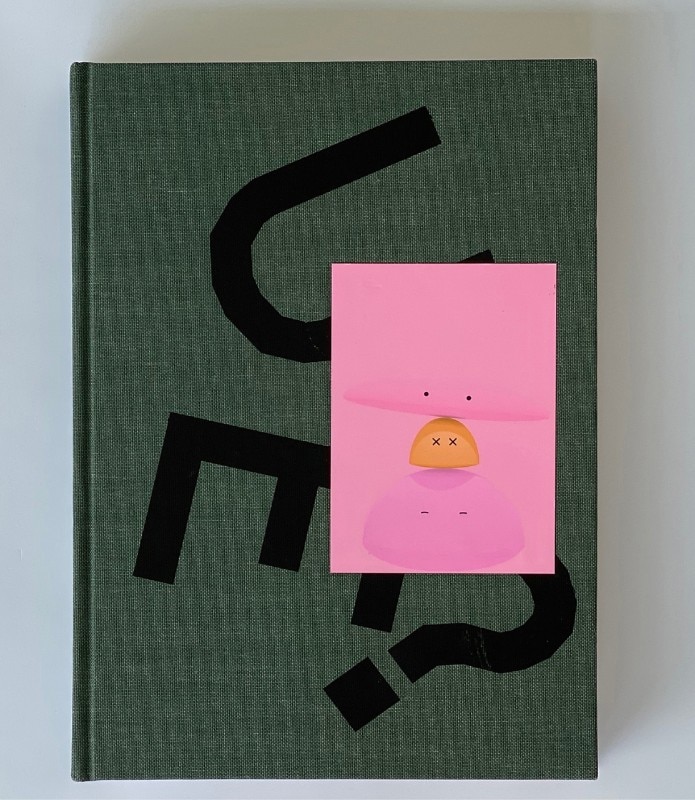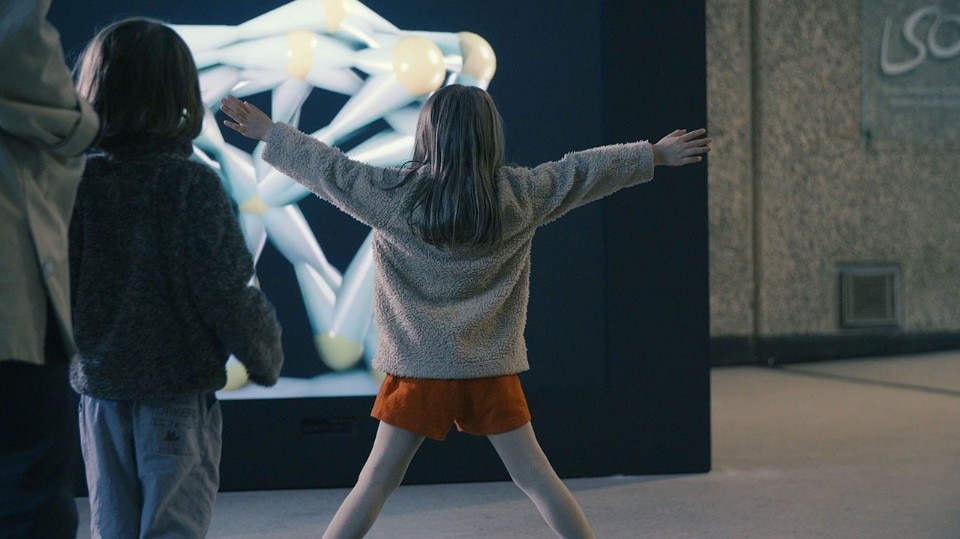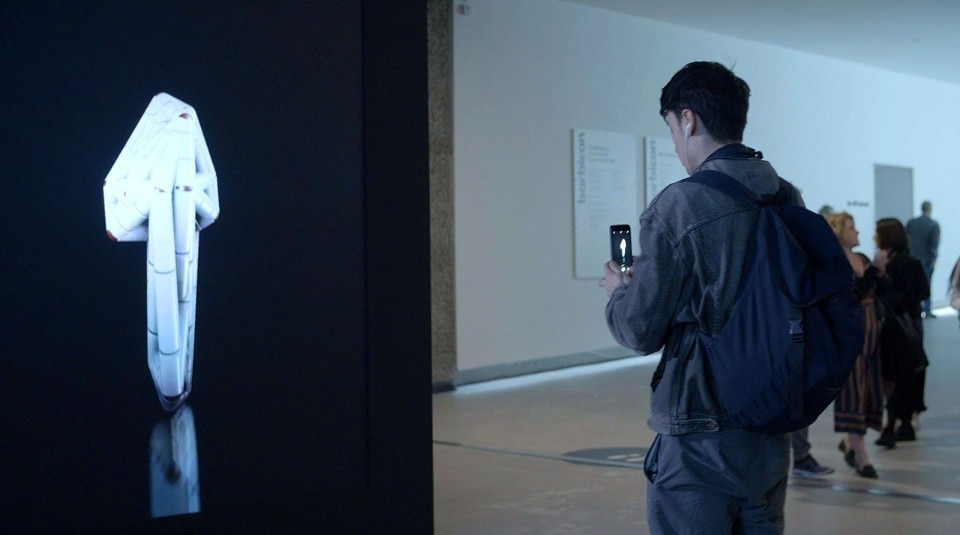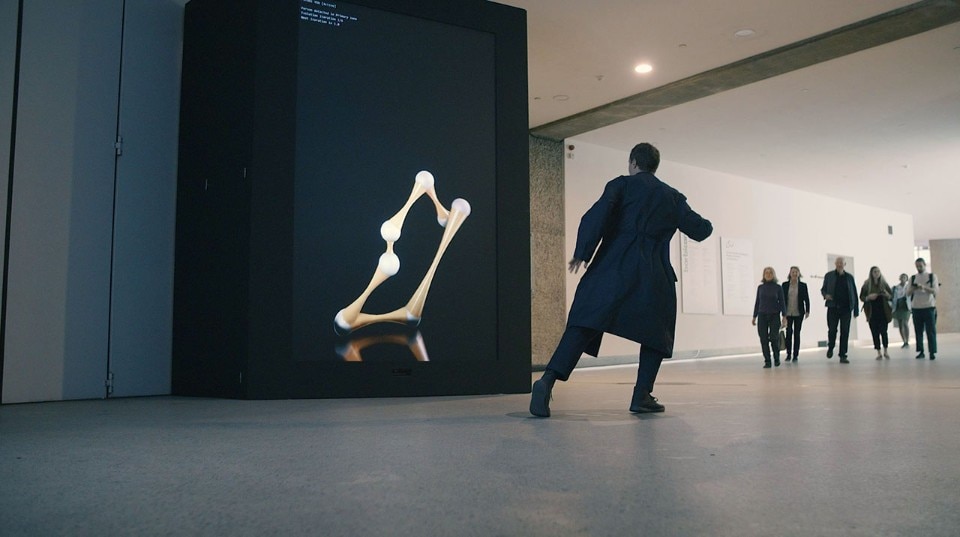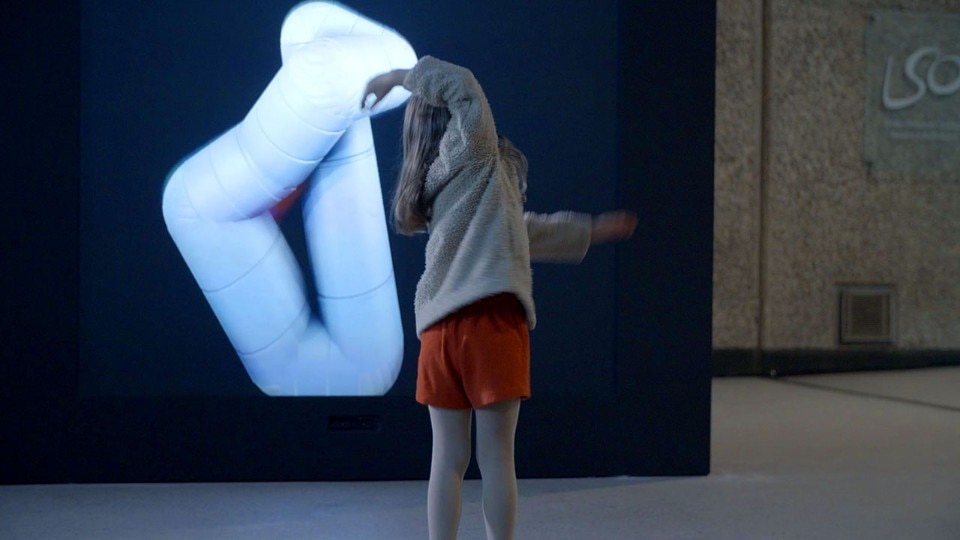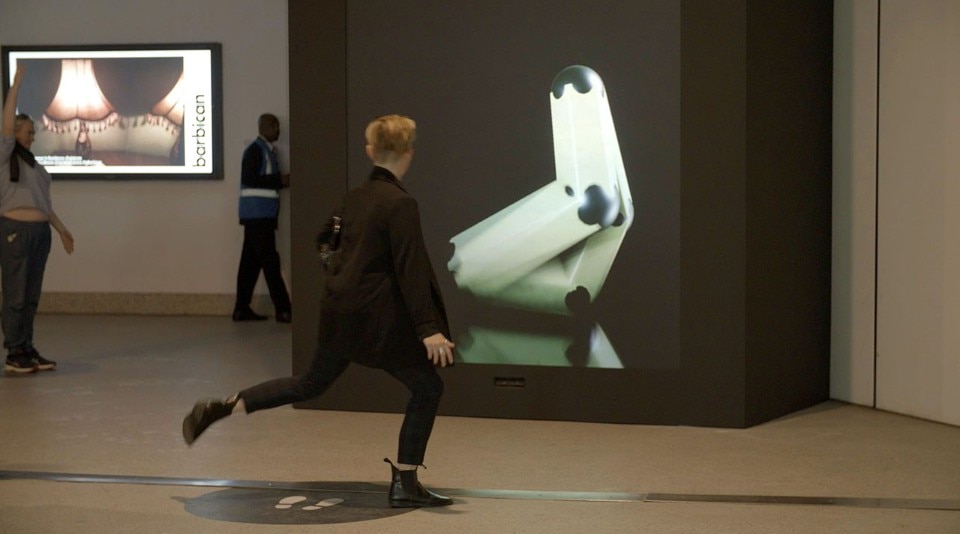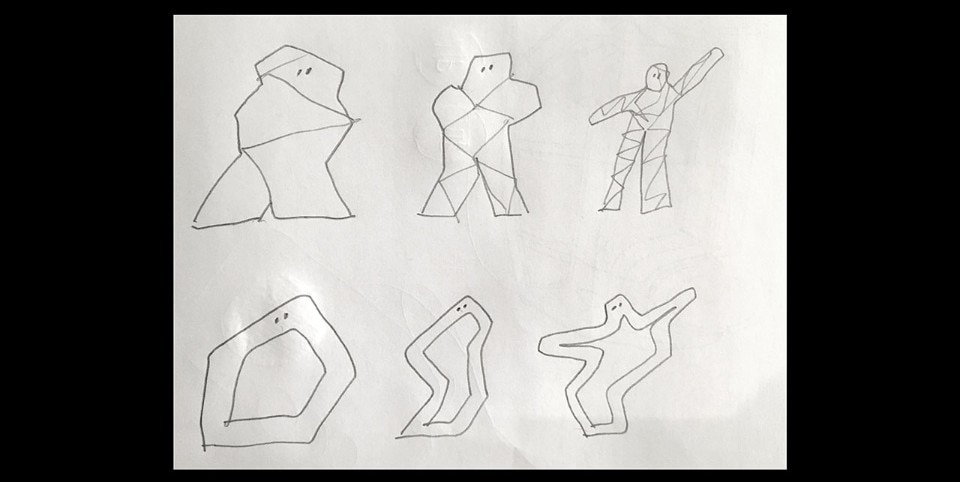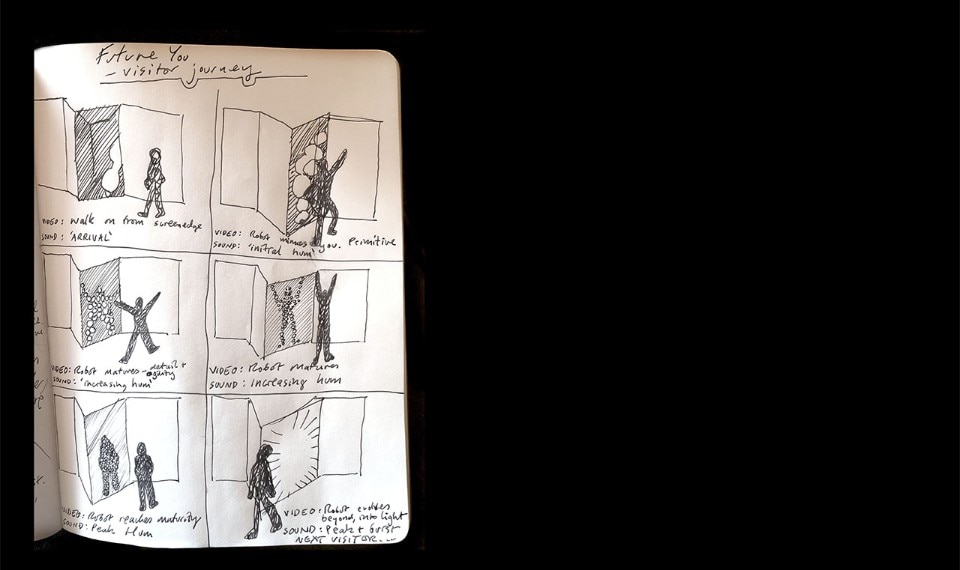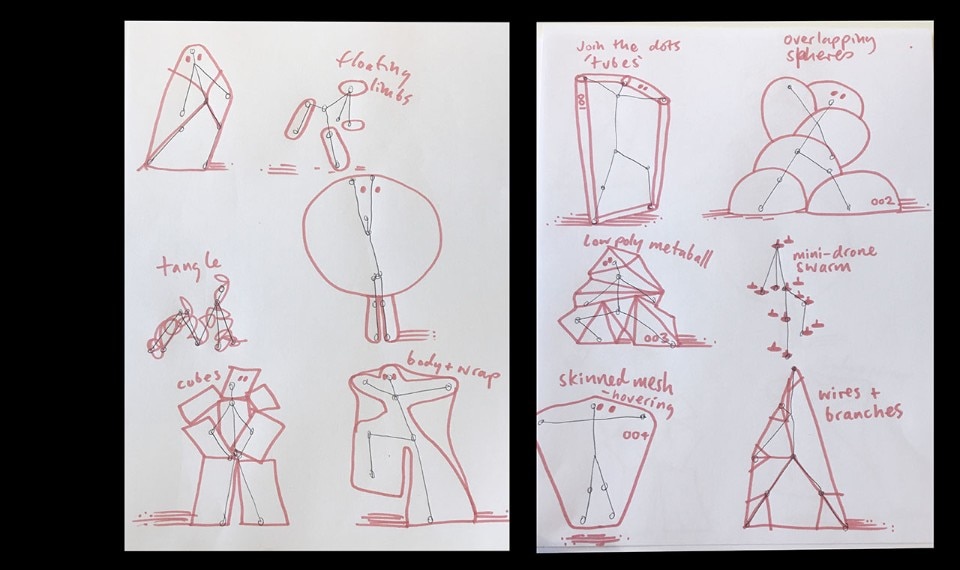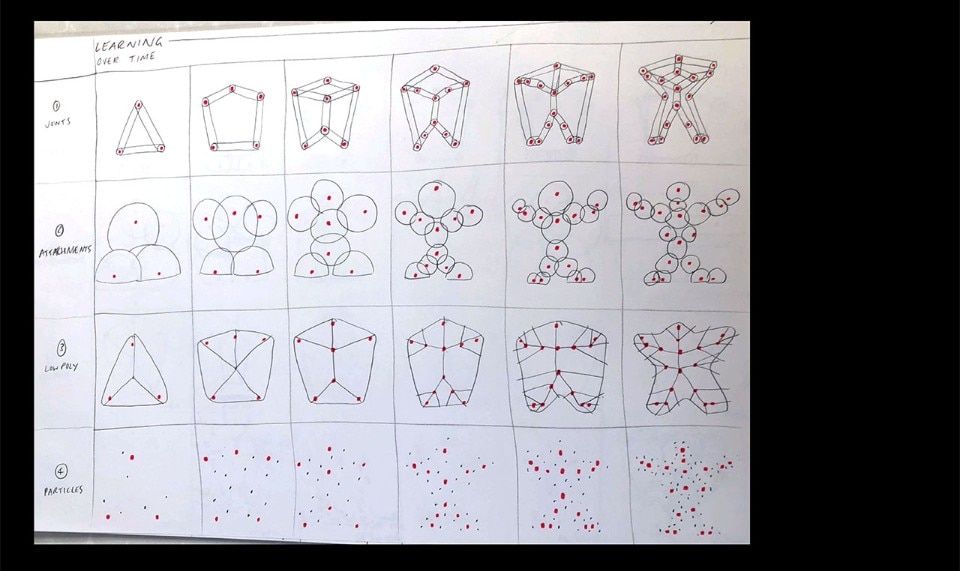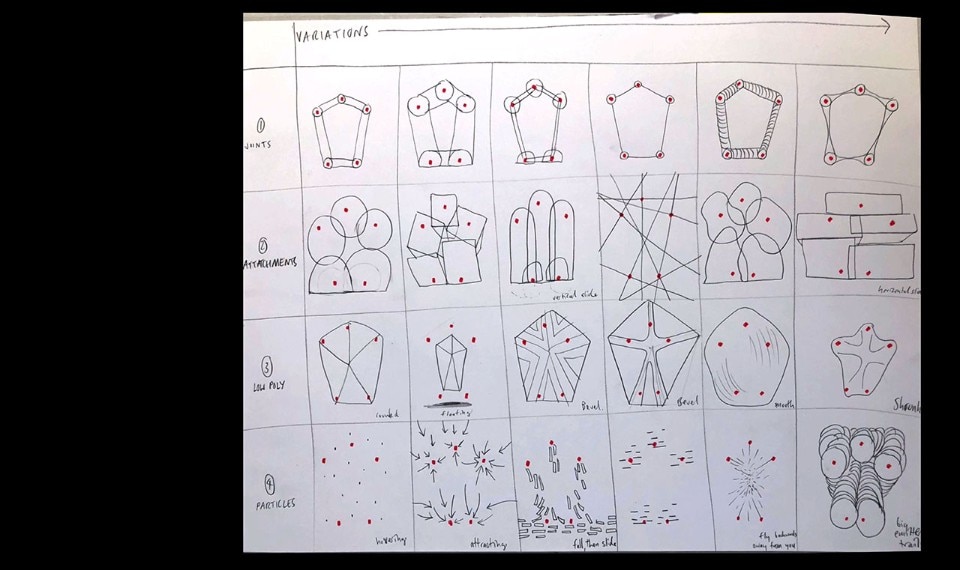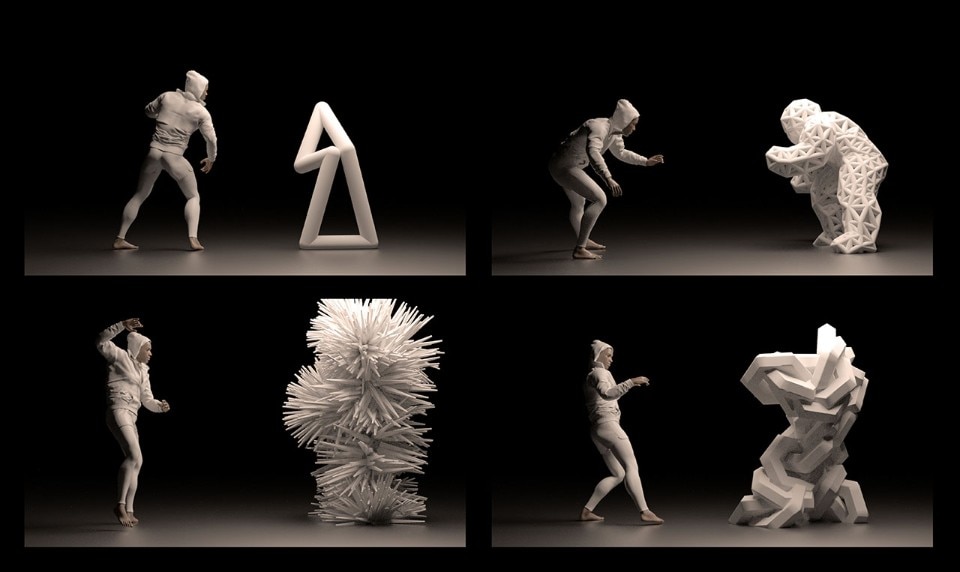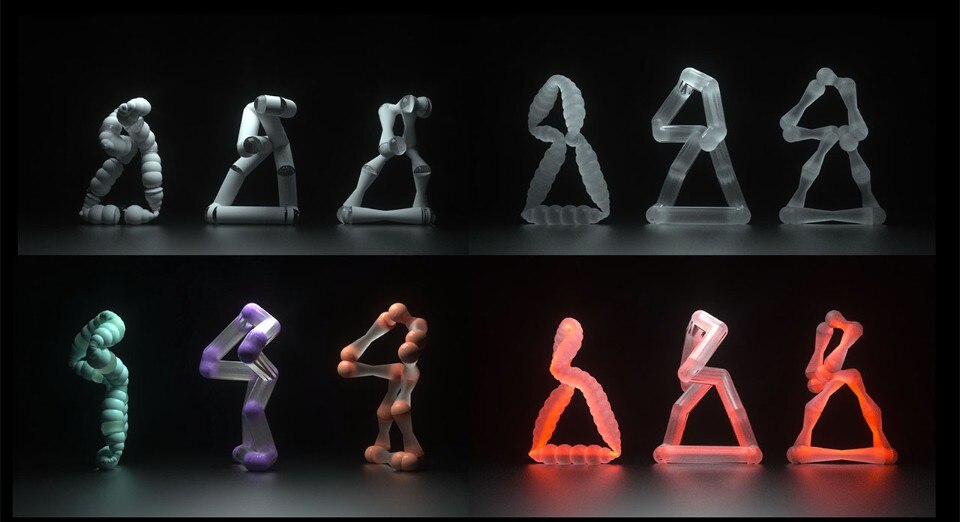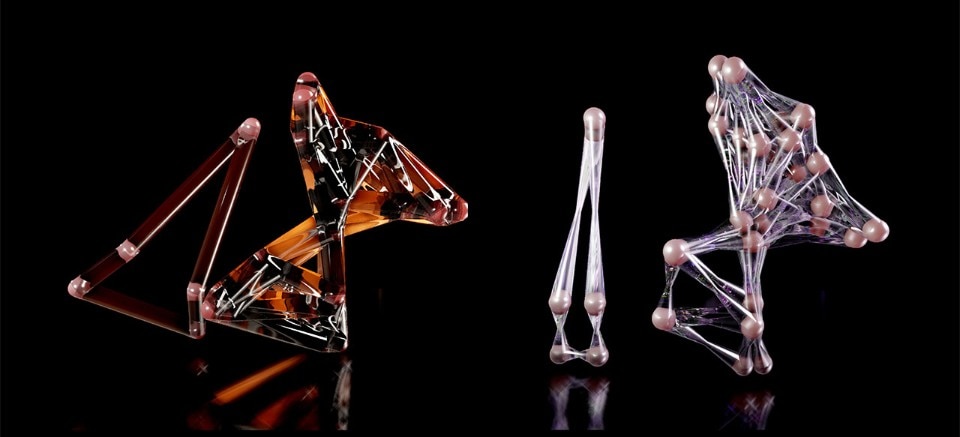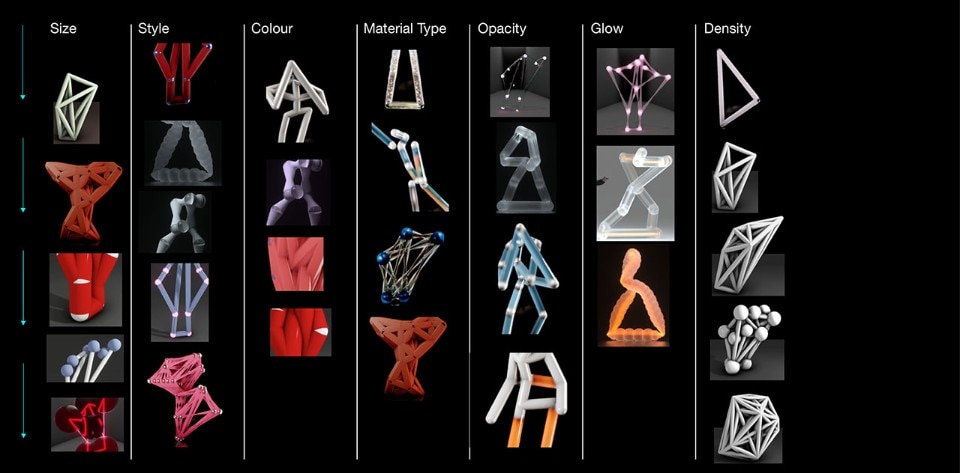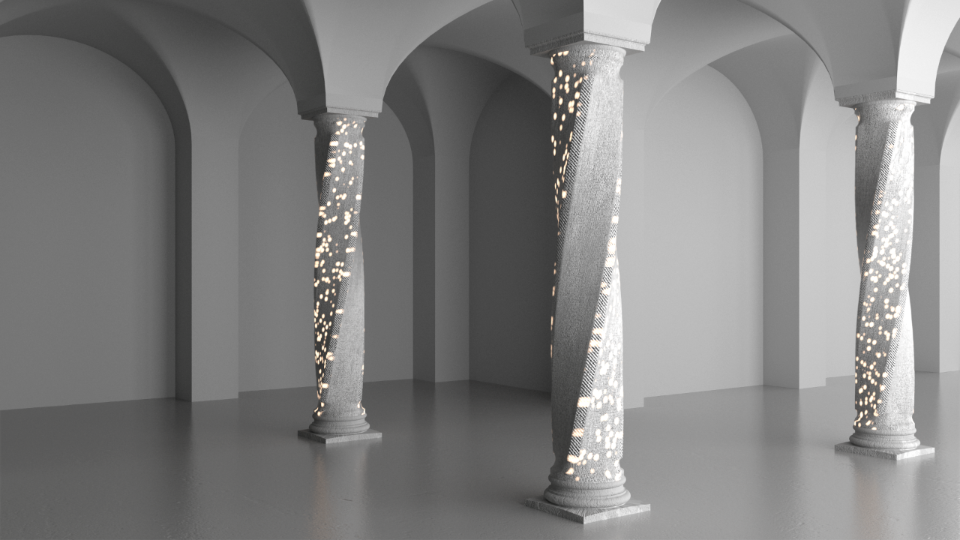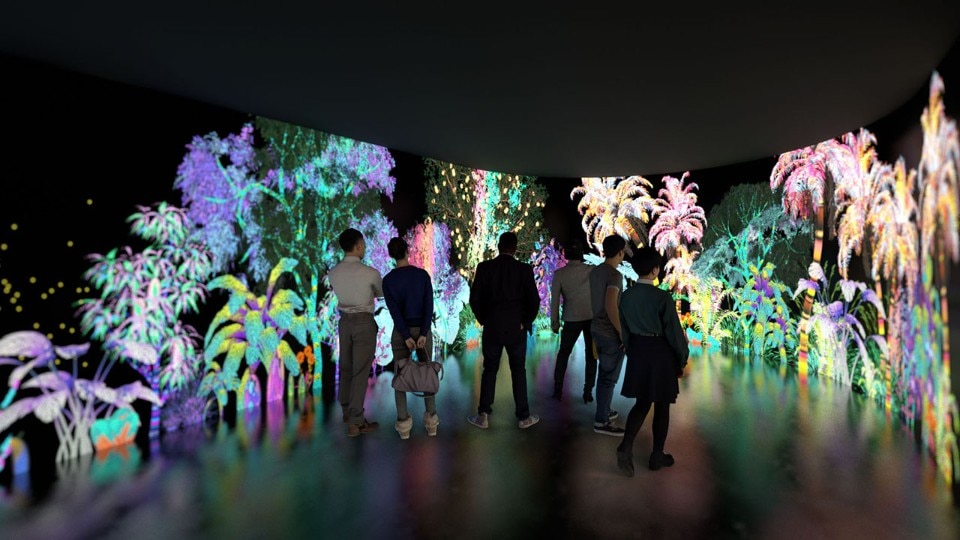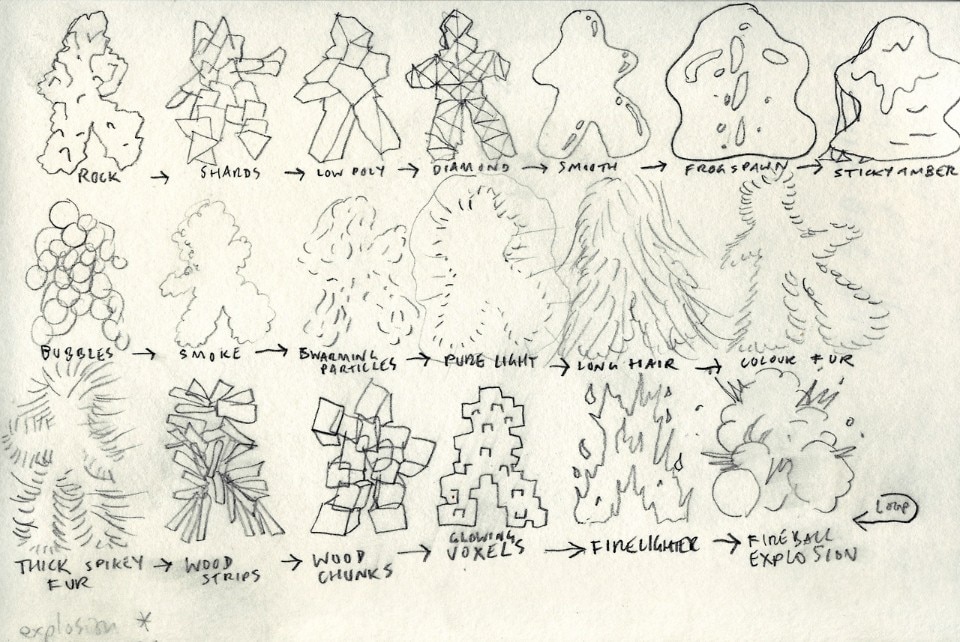Since 2004, Matt Pyke has been running Universal Everything from a wooden studio built in his garden on the edge of Sheffield in South Yorkshire. UE is a graphic arts studio that creates multi-sensory installations. It has produced videos and immersive landscapes for big companies and music groups including Apple, Radiohead, Coldplay, Chanel, Nike, Audi, Hyundai, Warp Records and MTV. Yet Pyke is not an expert of digital programmes; he trained as a graphic designer and illustrator. He began his career designing record covers and graphics for the music world.
The size of his work group varies from two to four members. There is no physical studio where he meets with clients; encounters are virtual, much like the video projects UE creates. Traditional work methods meld with new tools to move beyond the confines of printed matter while maintaining the clarity and coherence that distinguishes its best examples.
The aim is to favour more effective communication through “the many new screen-based touchpoints in our lives.” This, and much more, he told us about on the occasion of the release, a few months ago, of his monograph What is Universal Everything?, edited by Adrian Shaughnessy and Tony Brook and published by Unit Editions in a limited edition.
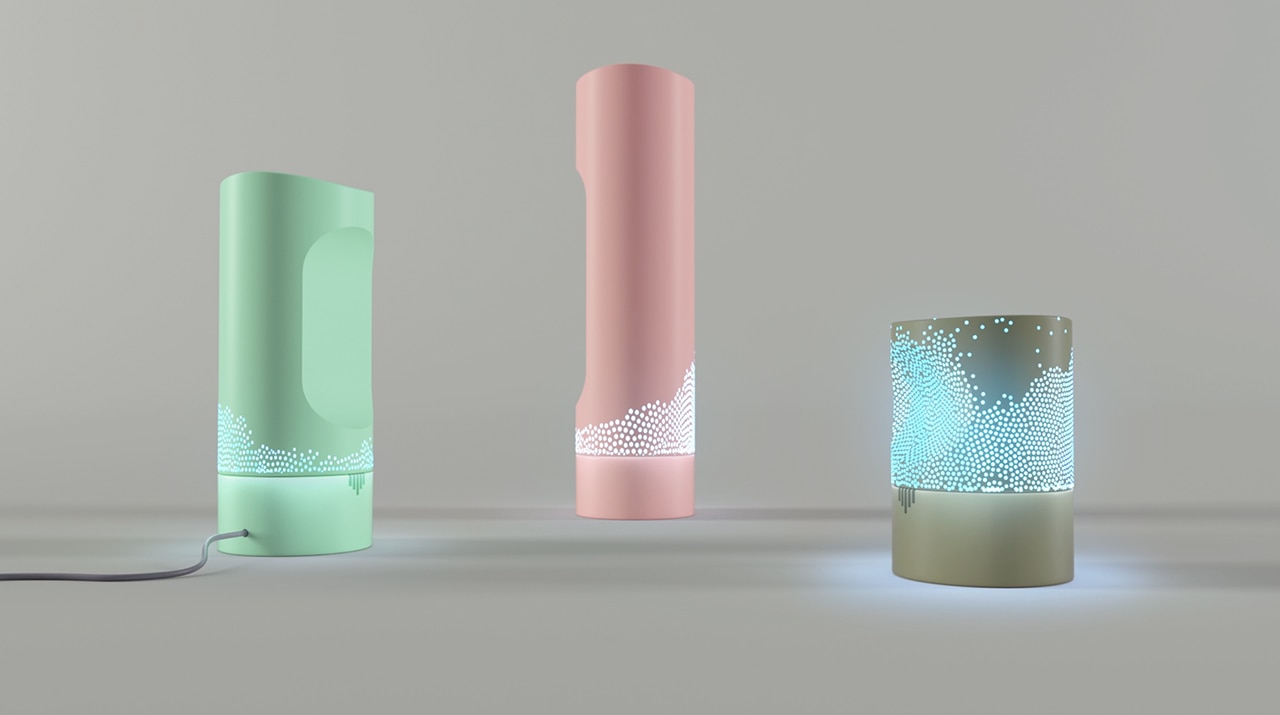
 View gallery
View gallery
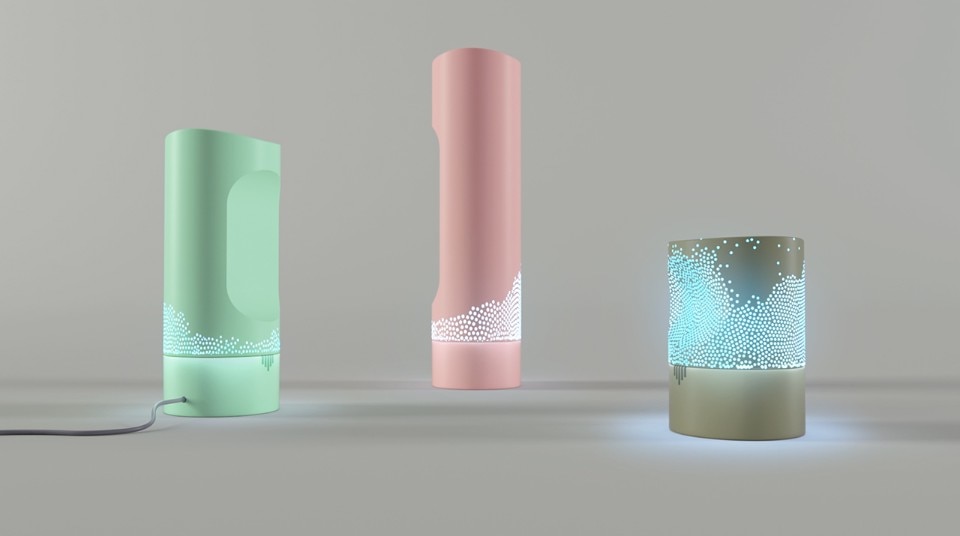
Prototype battery
Screens of the Future, an ongoing series of visionary prototypes, based on the emerging technologies of flexible displays, shape-shifting materials and context-aware functionality.
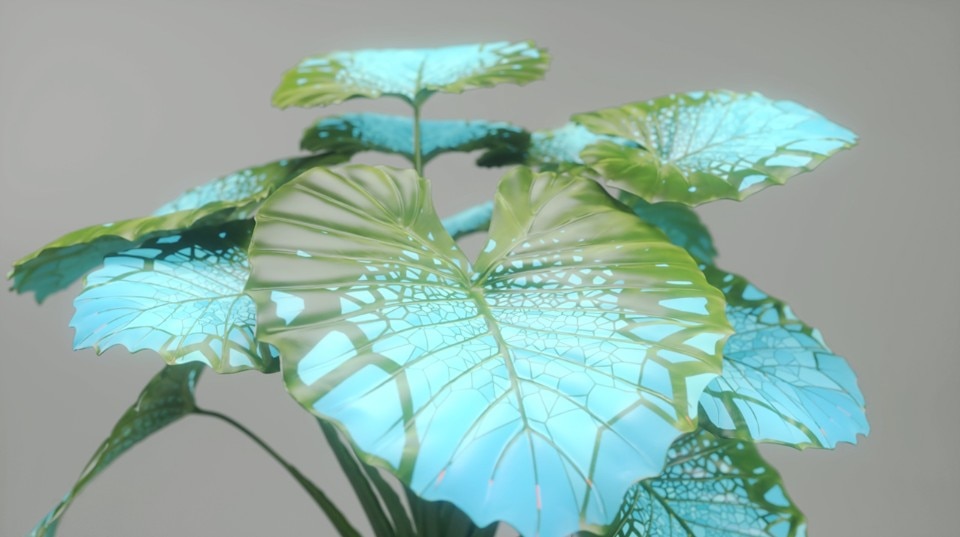
Prototype plant
Screens of the Future, an ongoing series of visionary prototypes, based on the emerging technologies of flexible displays, shape-shifting materials and context-aware functionality.
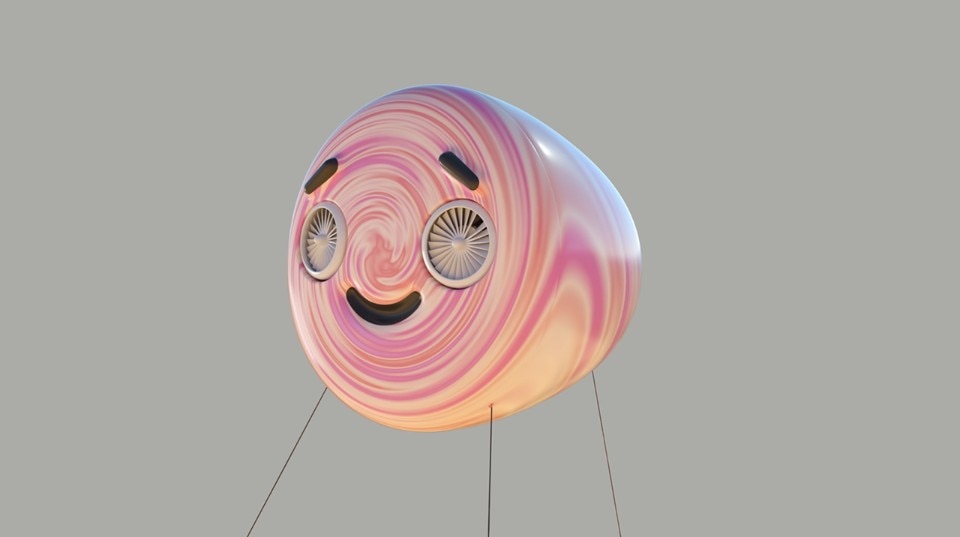
Prototype wind
Screens of the Future, an ongoing series of visionary prototypes, based on the emerging technologies of flexible displays, shape-shifting materials and context-aware functionality.
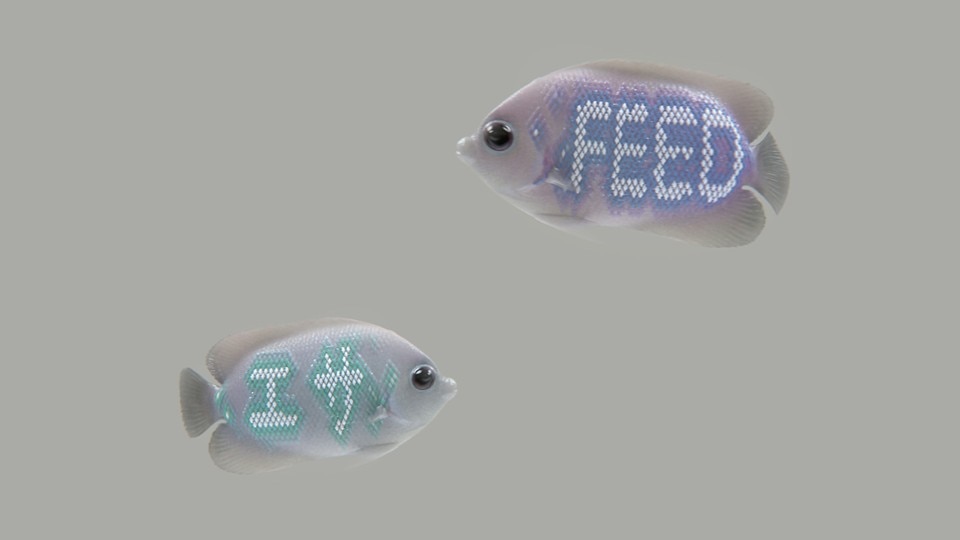
SOTF Fish
Screens of the Future, an ongoing series of visionary prototypes, based on the emerging technologies of flexible displays, shape-shifting materials and context-aware functionality.
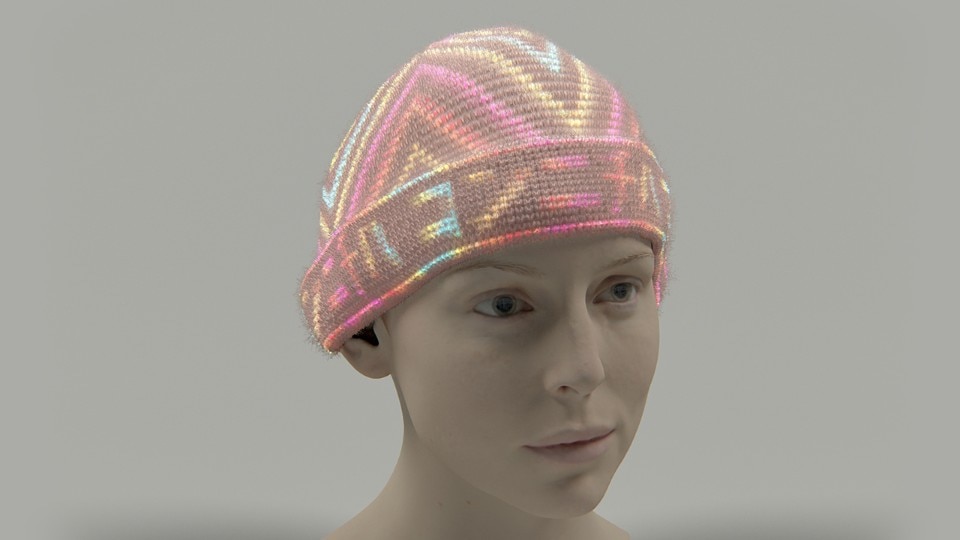
SOTF Knit
Screens of the Future, an ongoing series of visionary prototypes, based on the emerging technologies of flexible displays, shape-shifting materials and context-aware functionality.
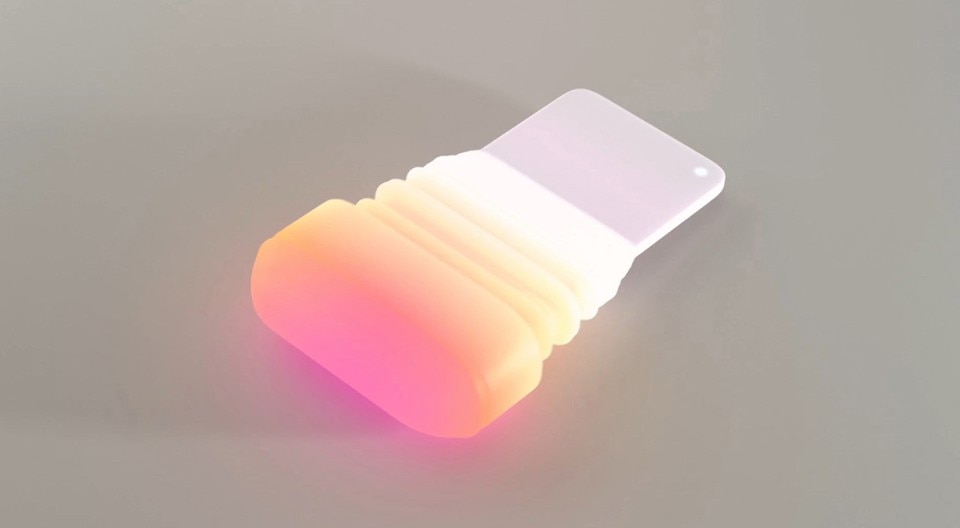
Screens of the future
Screens of the Future, an ongoing series of visionary prototypes, based on the emerging technologies of flexible displays, shape-shifting materials and context-aware functionality.
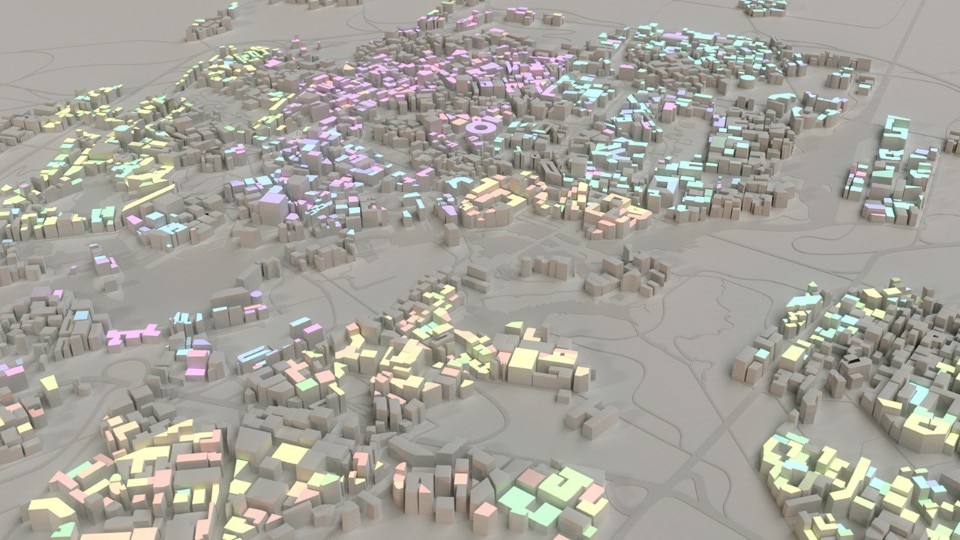
SOTF City
Screens of the Future, an ongoing series of visionary prototypes, based on the emerging technologies of flexible displays, shape-shifting materials and context-aware functionality.
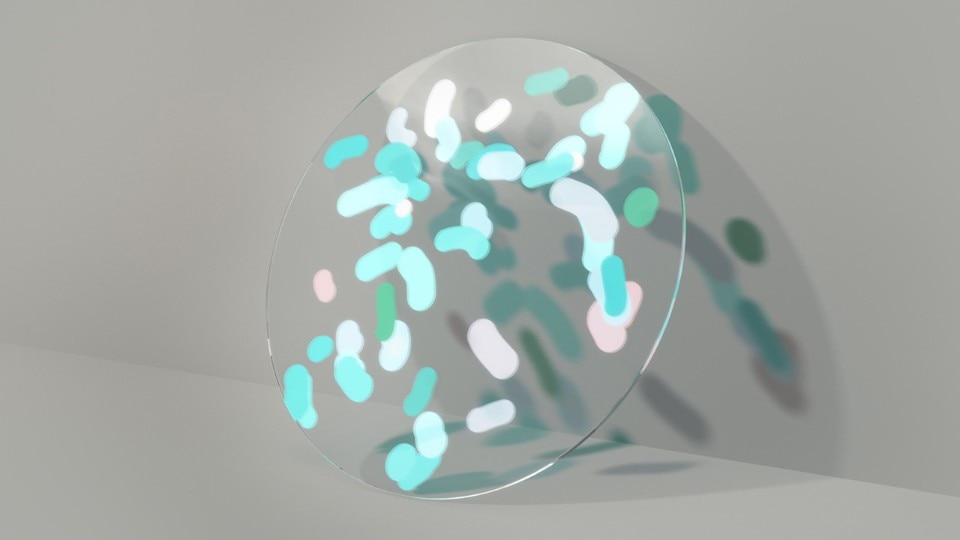
SOTF Glass
Screens of the Future, an ongoing series of visionary prototypes, based on the emerging technologies of flexible displays, shape-shifting materials and context-aware functionality.
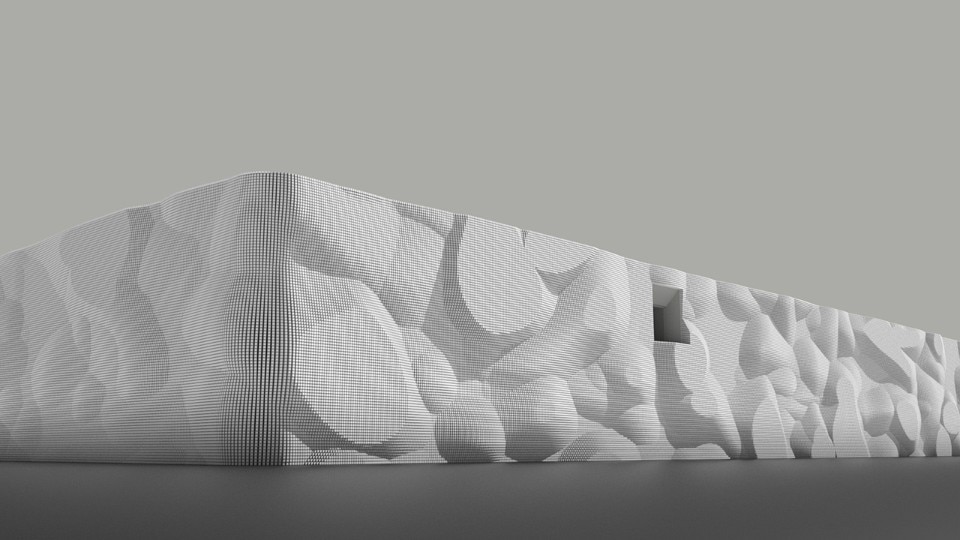
SOTF Haptitecture
Screens of the Future, an ongoing series of visionary prototypes, based on the emerging technologies of flexible displays, shape-shifting materials and context-aware functionality.
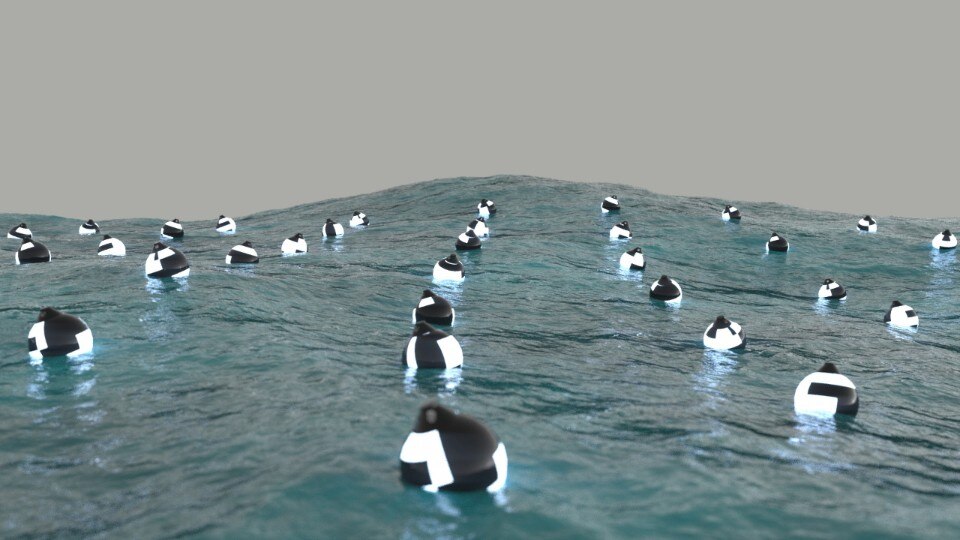
SOTF Ocean
Screens of the Future, an ongoing series of visionary prototypes, based on the emerging technologies of flexible displays, shape-shifting materials and context-aware functionality.
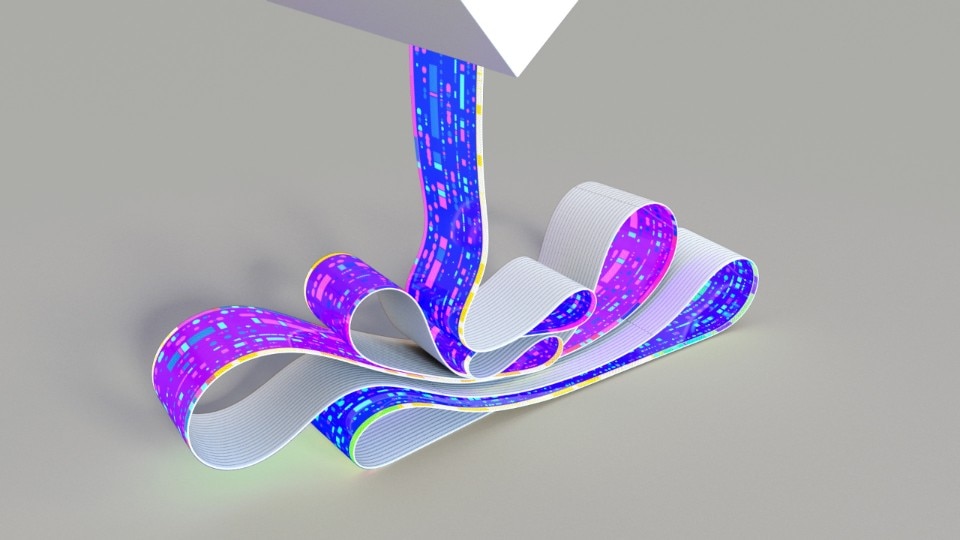
SOTF Print
Screens of the Future, an ongoing series of visionary prototypes, based on the emerging technologies of flexible displays, shape-shifting materials and context-aware functionality.
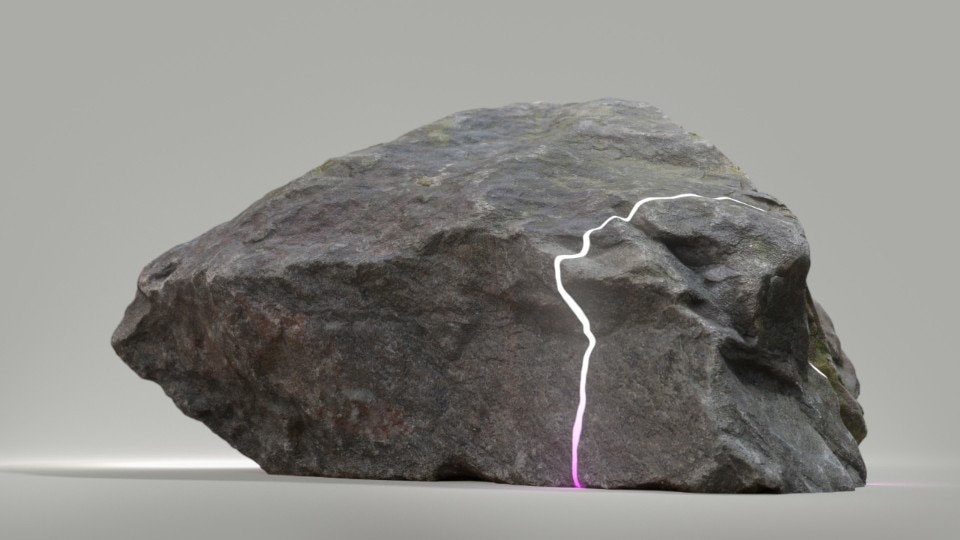
SOTF Rock
Screens of the Future, an ongoing series of visionary prototypes, based on the emerging technologies of flexible displays, shape-shifting materials and context-aware functionality.
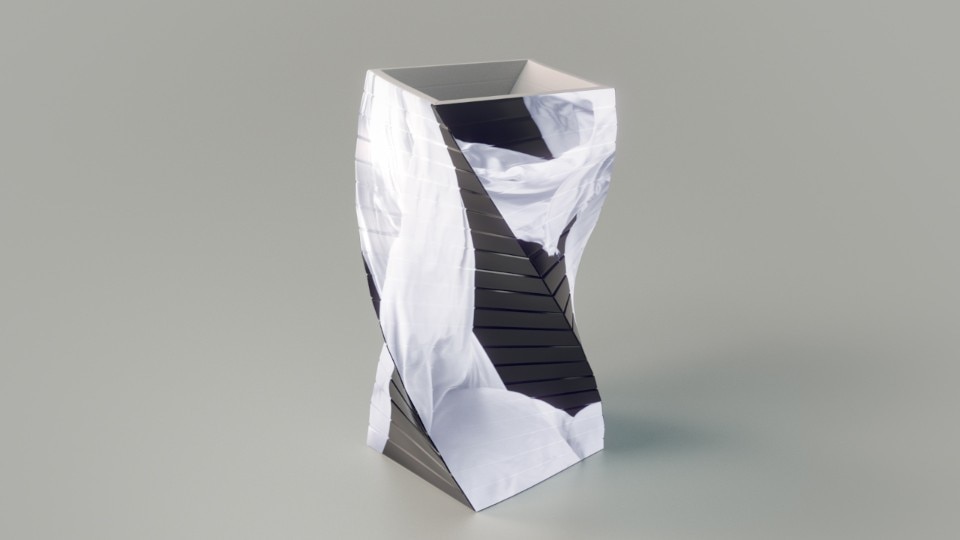
SOTF Twist
Screens of the Future, an ongoing series of visionary prototypes, based on the emerging technologies of flexible displays, shape-shifting materials and context-aware functionality.
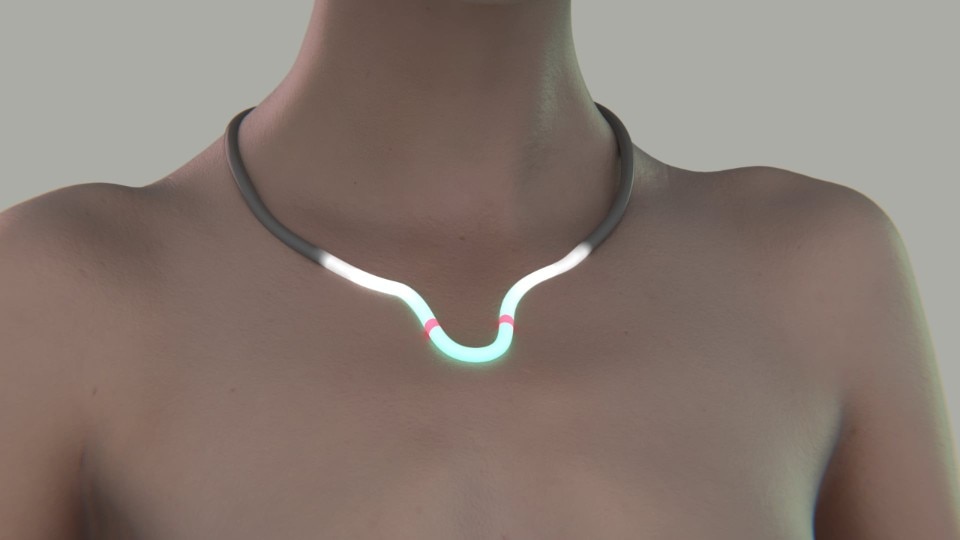
Screens of the future
Screens of the Future, an ongoing series of visionary prototypes, based on the emerging technologies of flexible displays, shape-shifting materials and context-aware functionality.
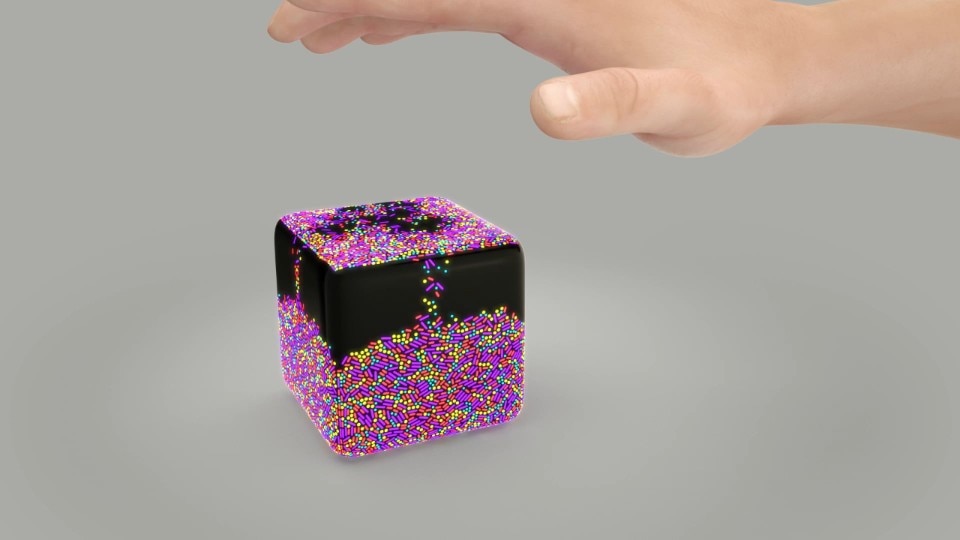
Screens of the future
Screens of the Future, an ongoing series of visionary prototypes, based on the emerging technologies of flexible displays, shape-shifting materials and context-aware functionality.
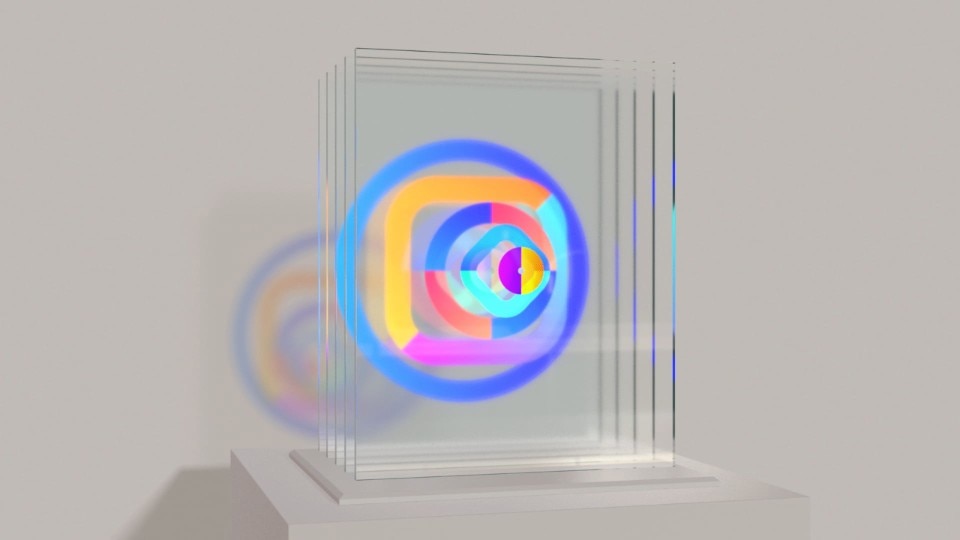
Screens of the future
Screens of the Future, an ongoing series of visionary prototypes, based on the emerging technologies of flexible displays, shape-shifting materials and context-aware functionality.
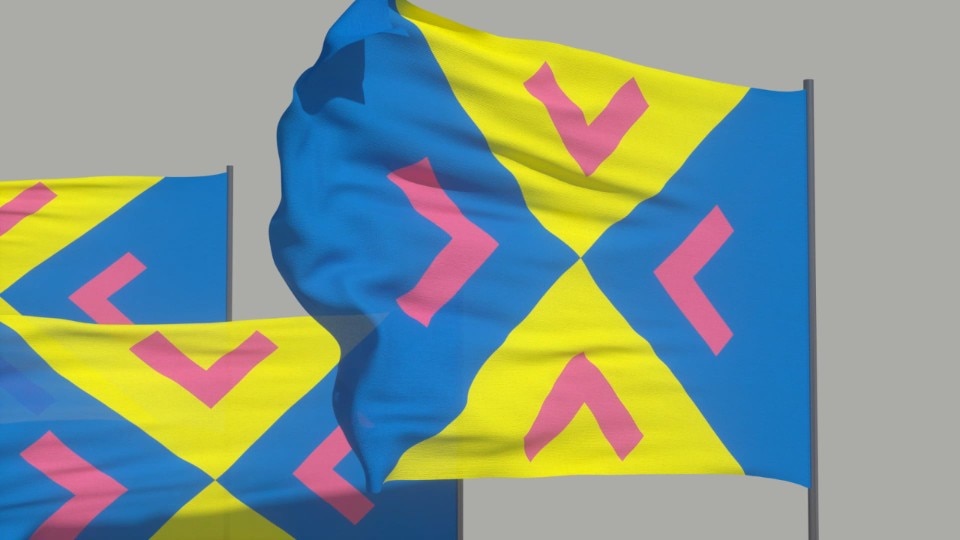
Screens of the future
Screens of the Future, an ongoing series of visionary prototypes, based on the emerging technologies of flexible displays, shape-shifting materials and context-aware functionality.
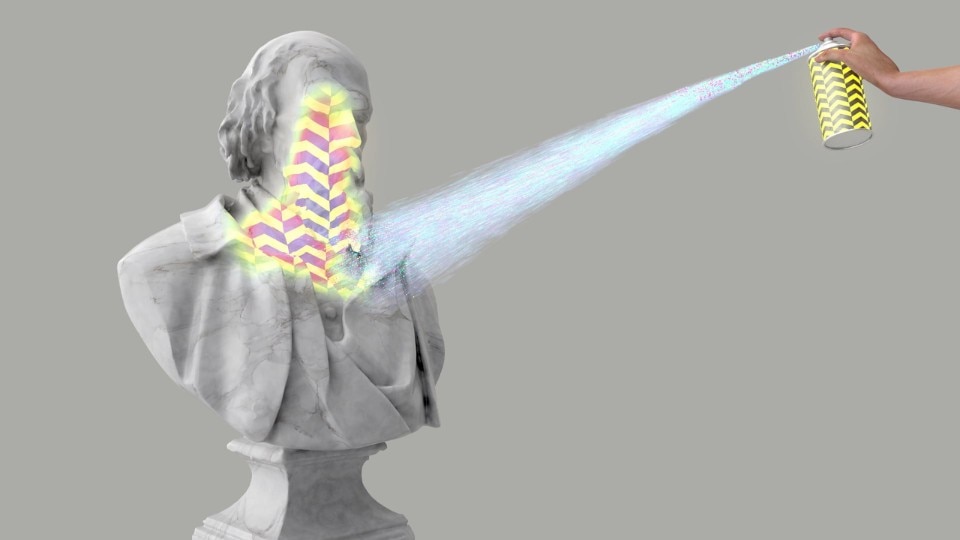
Screens of the future
Screens of the Future, an ongoing series of visionary prototypes, based on the emerging technologies of flexible displays, shape-shifting materials and context-aware functionality.
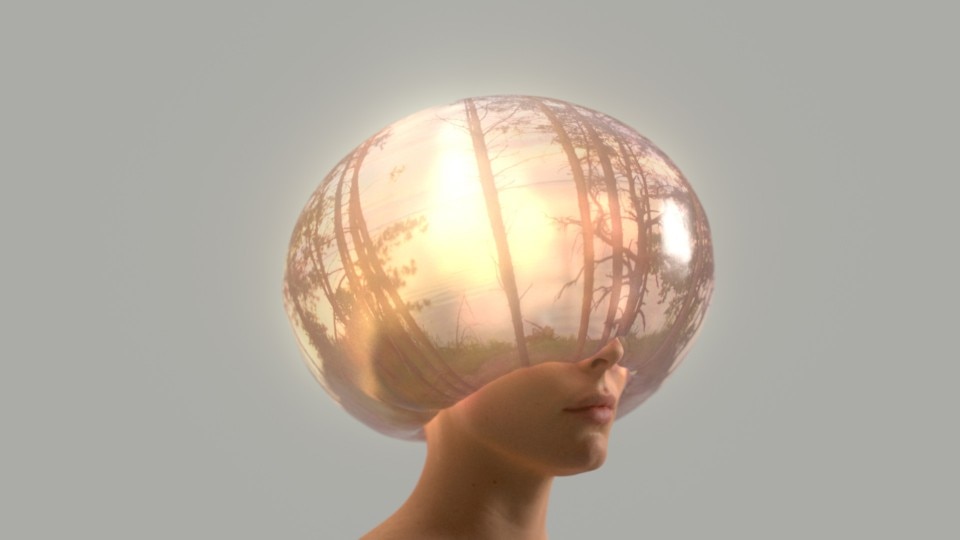
Screens of the future
Screens of the Future, an ongoing series of visionary prototypes, based on the emerging technologies of flexible displays, shape-shifting materials and context-aware functionality.
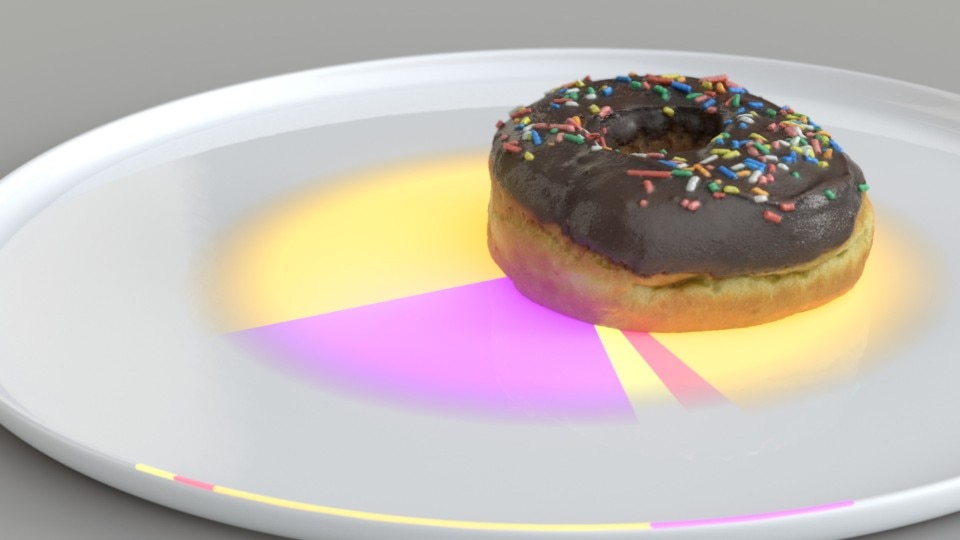
Screens of the future
Screens of the Future, an ongoing series of visionary prototypes, based on the emerging technologies of flexible displays, shape-shifting materials and context-aware functionality.
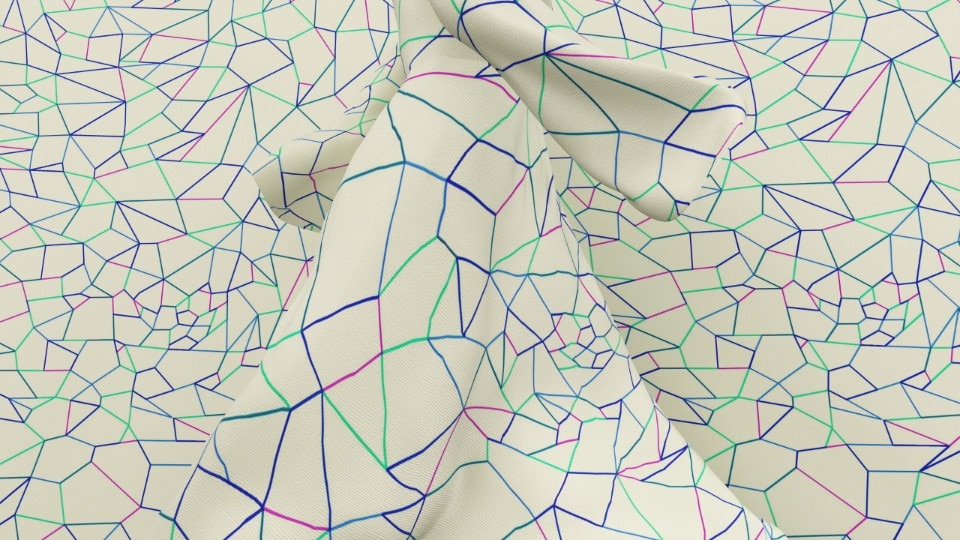
Screens of the future
Screens of the Future, an ongoing series of visionary prototypes, based on the emerging technologies of flexible displays, shape-shifting materials and context-aware functionality.
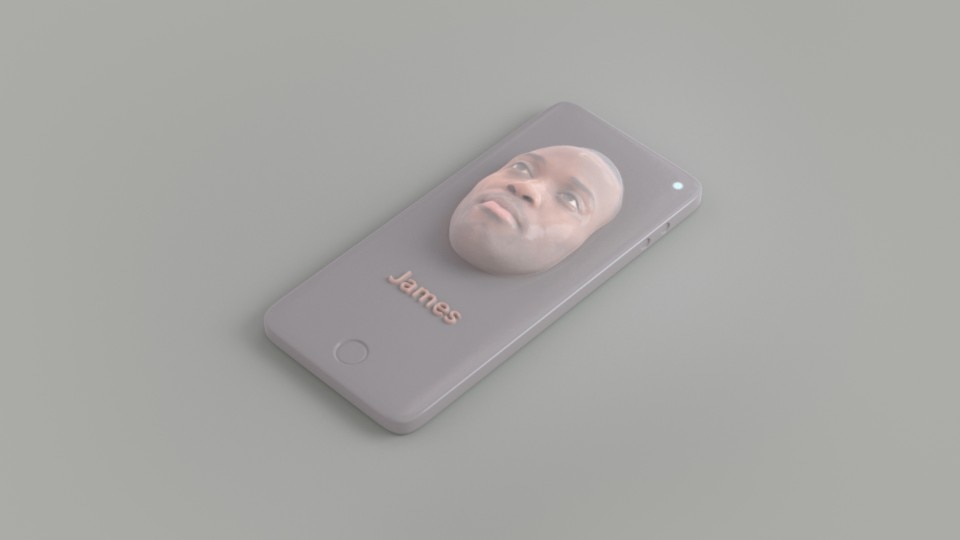
Screens of the future
Screens of the Future, an ongoing series of visionary prototypes, based on the emerging technologies of flexible displays, shape-shifting materials and context-aware functionality.
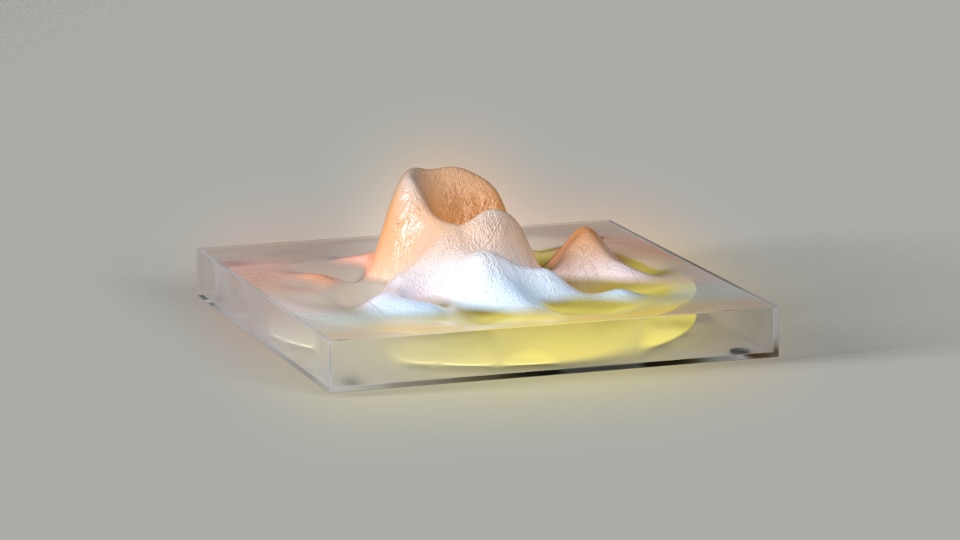
Screens of the future
Screens of the Future, an ongoing series of visionary prototypes, based on the emerging technologies of flexible displays, shape-shifting materials and context-aware functionality.
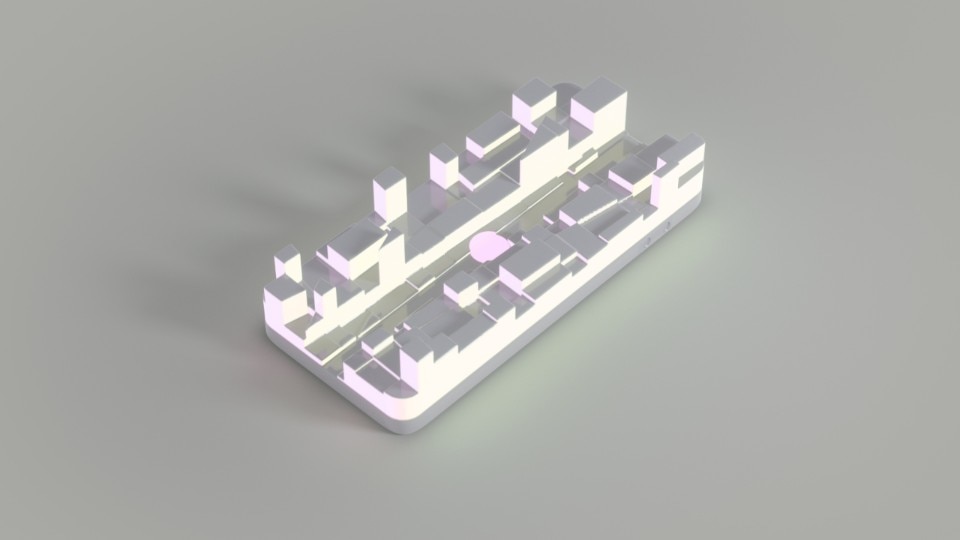
Screens of the future
Screens of the Future, an ongoing series of visionary prototypes, based on the emerging technologies of flexible displays, shape-shifting materials and context-aware functionality.

Prototype battery
Screens of the Future, an ongoing series of visionary prototypes, based on the emerging technologies of flexible displays, shape-shifting materials and context-aware functionality.

Prototype plant
Screens of the Future, an ongoing series of visionary prototypes, based on the emerging technologies of flexible displays, shape-shifting materials and context-aware functionality.

Prototype wind
Screens of the Future, an ongoing series of visionary prototypes, based on the emerging technologies of flexible displays, shape-shifting materials and context-aware functionality.

SOTF Fish
Screens of the Future, an ongoing series of visionary prototypes, based on the emerging technologies of flexible displays, shape-shifting materials and context-aware functionality.

SOTF Knit
Screens of the Future, an ongoing series of visionary prototypes, based on the emerging technologies of flexible displays, shape-shifting materials and context-aware functionality.

Screens of the future
Screens of the Future, an ongoing series of visionary prototypes, based on the emerging technologies of flexible displays, shape-shifting materials and context-aware functionality.

SOTF City
Screens of the Future, an ongoing series of visionary prototypes, based on the emerging technologies of flexible displays, shape-shifting materials and context-aware functionality.

SOTF Glass
Screens of the Future, an ongoing series of visionary prototypes, based on the emerging technologies of flexible displays, shape-shifting materials and context-aware functionality.

SOTF Haptitecture
Screens of the Future, an ongoing series of visionary prototypes, based on the emerging technologies of flexible displays, shape-shifting materials and context-aware functionality.

SOTF Ocean
Screens of the Future, an ongoing series of visionary prototypes, based on the emerging technologies of flexible displays, shape-shifting materials and context-aware functionality.

SOTF Print
Screens of the Future, an ongoing series of visionary prototypes, based on the emerging technologies of flexible displays, shape-shifting materials and context-aware functionality.

SOTF Rock
Screens of the Future, an ongoing series of visionary prototypes, based on the emerging technologies of flexible displays, shape-shifting materials and context-aware functionality.

SOTF Twist
Screens of the Future, an ongoing series of visionary prototypes, based on the emerging technologies of flexible displays, shape-shifting materials and context-aware functionality.

Screens of the future
Screens of the Future, an ongoing series of visionary prototypes, based on the emerging technologies of flexible displays, shape-shifting materials and context-aware functionality.

Screens of the future
Screens of the Future, an ongoing series of visionary prototypes, based on the emerging technologies of flexible displays, shape-shifting materials and context-aware functionality.

Screens of the future
Screens of the Future, an ongoing series of visionary prototypes, based on the emerging technologies of flexible displays, shape-shifting materials and context-aware functionality.

Screens of the future
Screens of the Future, an ongoing series of visionary prototypes, based on the emerging technologies of flexible displays, shape-shifting materials and context-aware functionality.

Screens of the future
Screens of the Future, an ongoing series of visionary prototypes, based on the emerging technologies of flexible displays, shape-shifting materials and context-aware functionality.

Screens of the future
Screens of the Future, an ongoing series of visionary prototypes, based on the emerging technologies of flexible displays, shape-shifting materials and context-aware functionality.

Screens of the future
Screens of the Future, an ongoing series of visionary prototypes, based on the emerging technologies of flexible displays, shape-shifting materials and context-aware functionality.

Screens of the future
Screens of the Future, an ongoing series of visionary prototypes, based on the emerging technologies of flexible displays, shape-shifting materials and context-aware functionality.

Screens of the future
Screens of the Future, an ongoing series of visionary prototypes, based on the emerging technologies of flexible displays, shape-shifting materials and context-aware functionality.

Screens of the future
Screens of the Future, an ongoing series of visionary prototypes, based on the emerging technologies of flexible displays, shape-shifting materials and context-aware functionality.

Screens of the future
Screens of the Future, an ongoing series of visionary prototypes, based on the emerging technologies of flexible displays, shape-shifting materials and context-aware functionality.
When did you understand the course your work had undertaken was the right one? Is there an episode or commission underlining this step?
We first found our ideal ‘canvas’ using video walls, when we were commissioned to make integrated video artworks for the interior of the Nokia Flagship Stores in 2006. We found our natural ‘subject’ of digital lifeforms when we created the film ‘Transfiguration’, our endlessly evolving walking figure, for our solo show Super Computer Romantics at La Gaite Lyrique digital art museum in 2011.
What is Universal Everything? Which are its strong points?
Future optimism. Finding emotions in emerging technology. Using the screens of the future as our canvas. Seeking new forms of figurative representation through the eyes of new technology. Augmenting and enhancing architecture with video facades and projections. Existing outside of London in our own world. Attracting global clients when we do not have a physical studio. Our virtual studio model, collaborating with amazing talent worldwide.
Which is your working method? To which extent do you use traditional tools like drawing or maquettes?
I always start with drawing, and continue until the concept is desperate to leap off the page and into digital form. I do not code myself, or use 3D software, as it limits my imagination. Instead I prefer to collaborate with amazing talents which bring my visions to life.
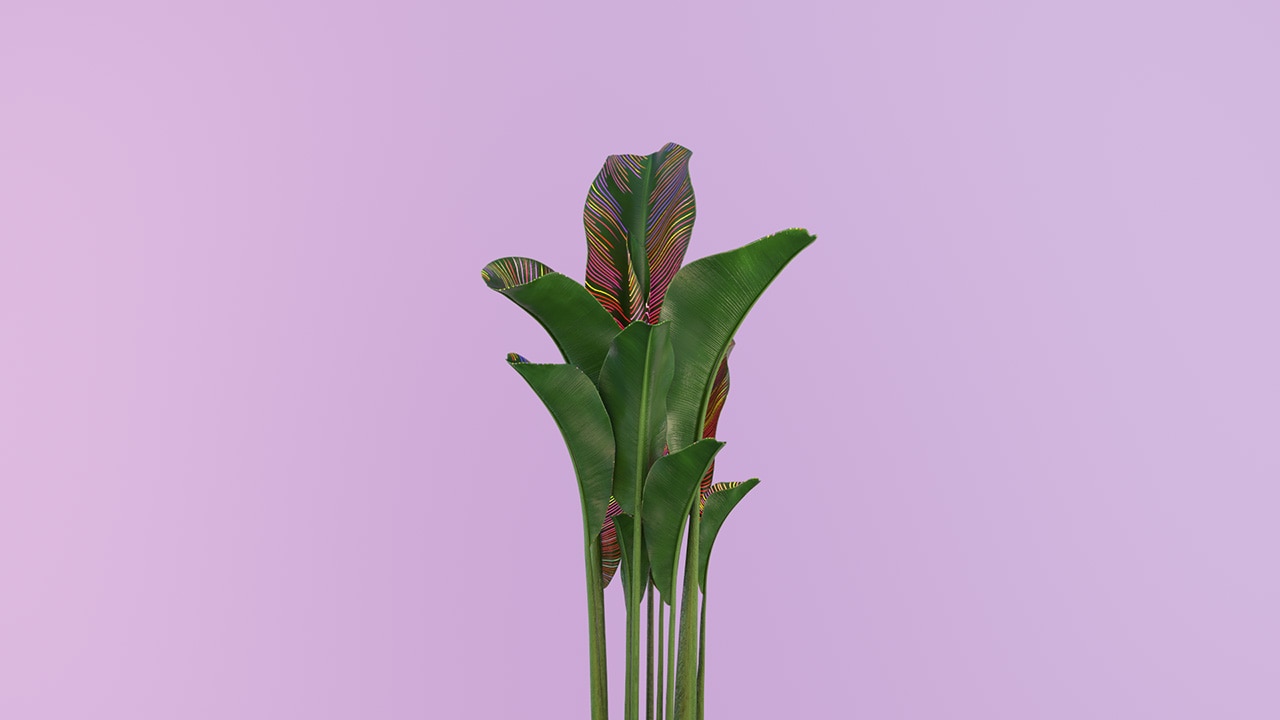
 View gallery
View gallery
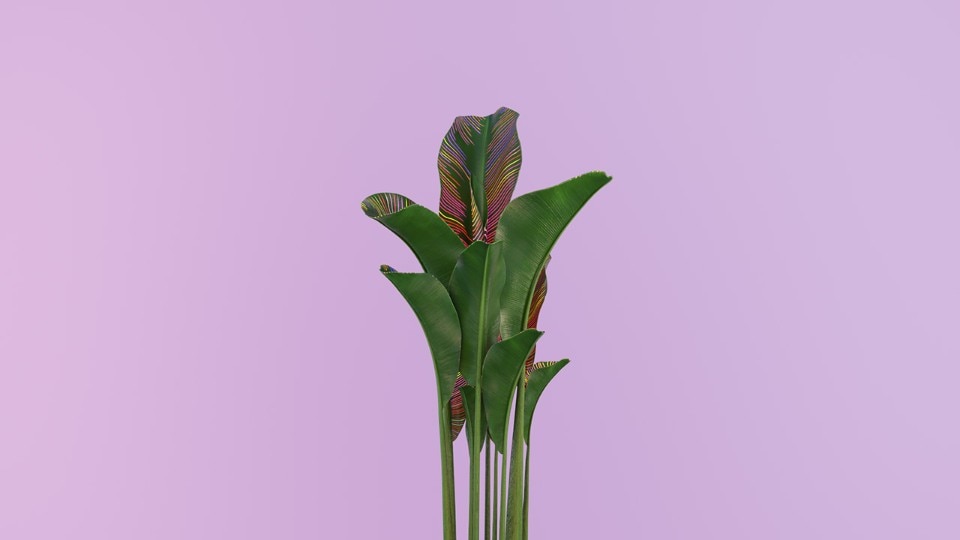
Tetrachromia, a video series seeing nature through the eyes of a bird (animazione: Matt Frodsham).
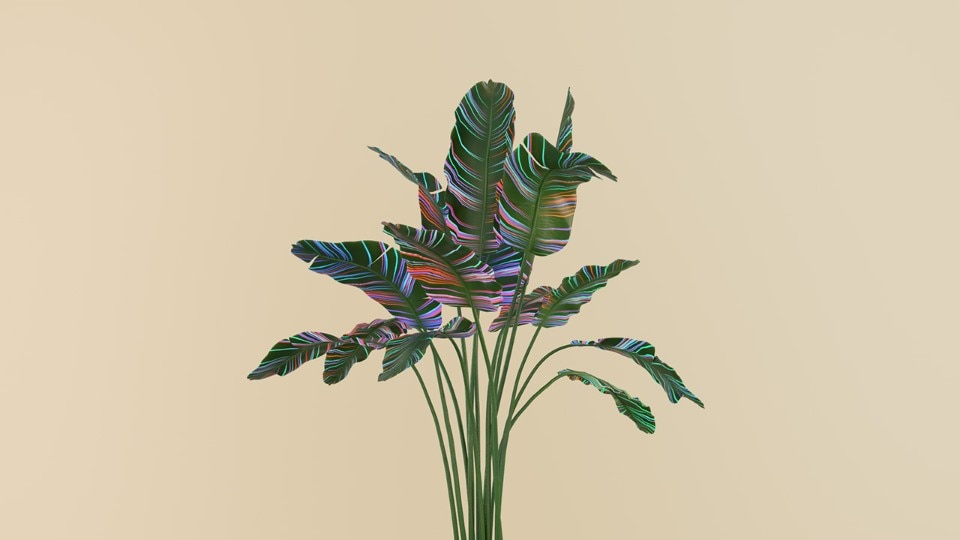
Tetrachromia, a video series seeing nature through the eyes of a bird (animazione: Matt Frodsham).
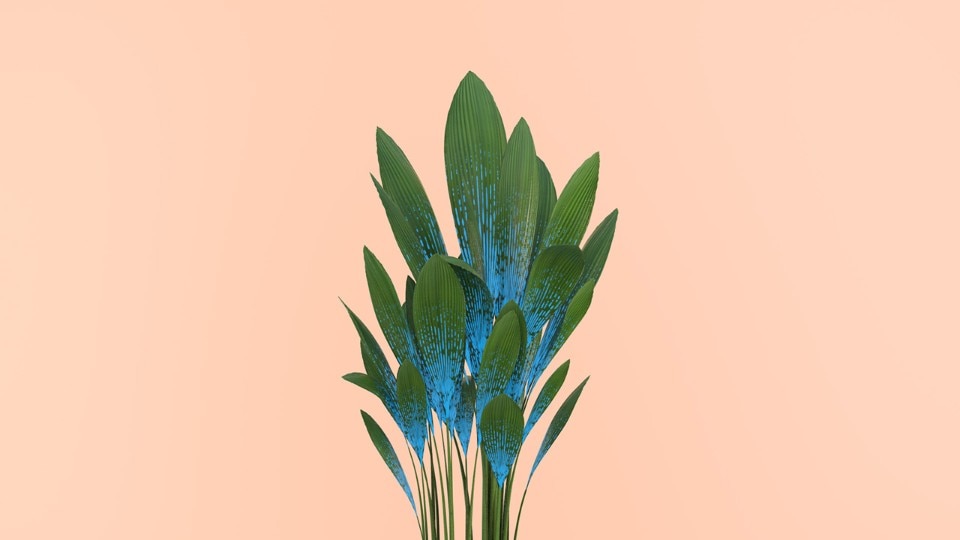
Tetrachromia, a video series seeing nature through the eyes of a bird (animazione: Matt Frodsham).
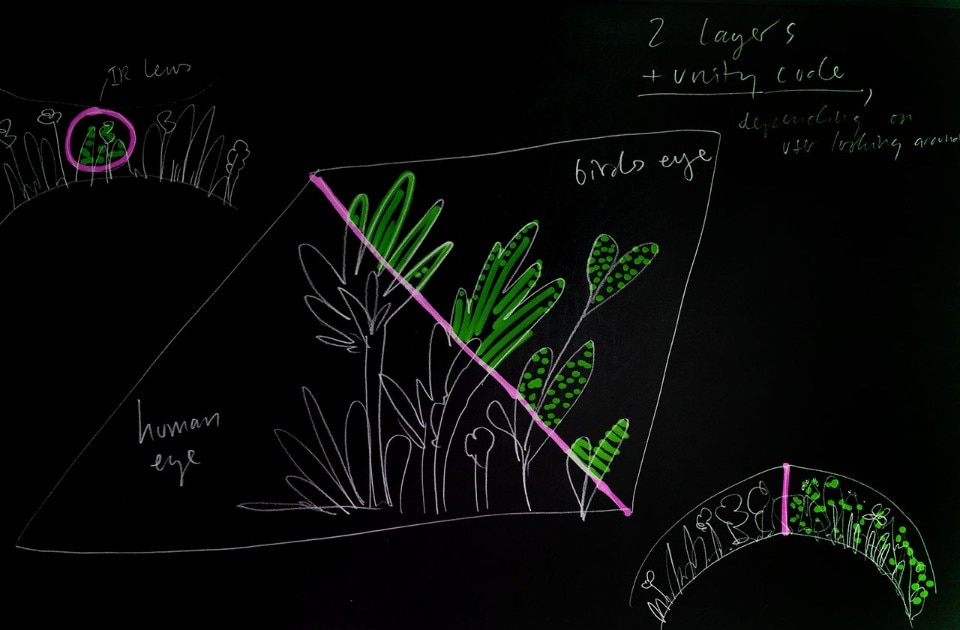
Tetrachromia, a video series seeing nature through the eyes of a bird (animazione: Matt Frodsham).
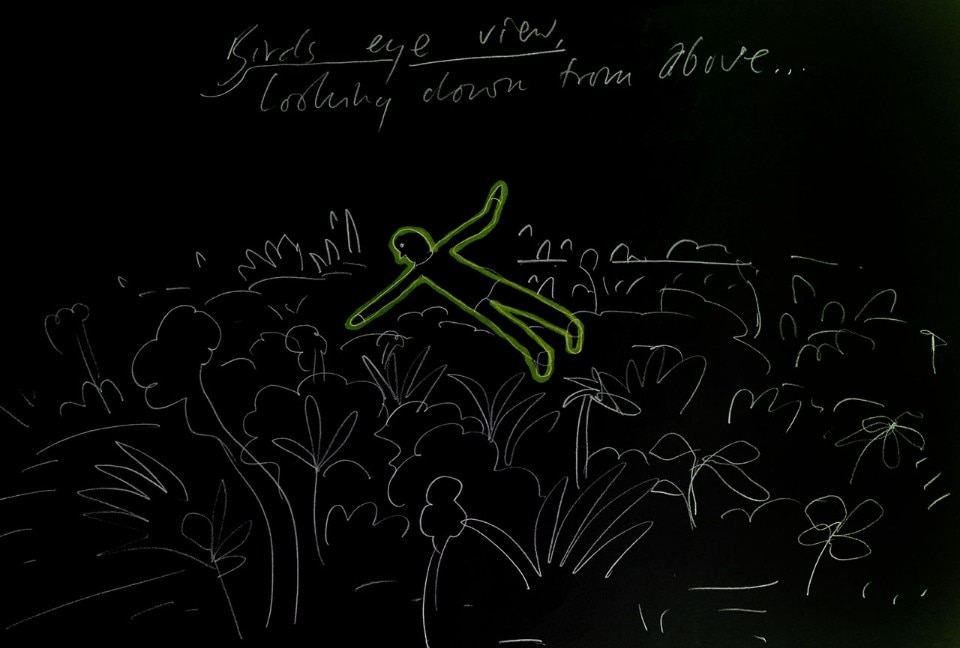
Tetrachromia, a video series seeing nature through the eyes of a bird (animazione: Matt Frodsham).
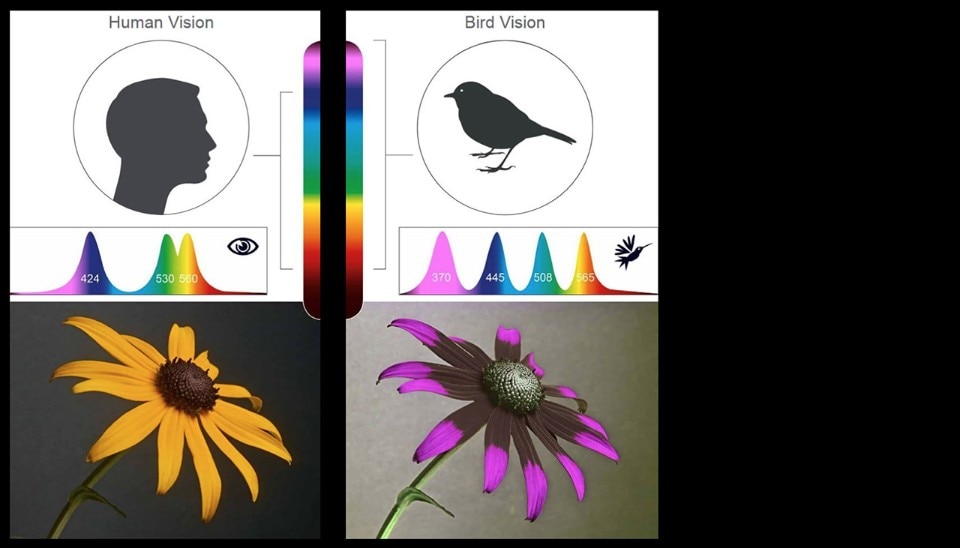
Concept
Tetrachromia, a video series seeing nature through the eyes of a bird (animazione: Matt Frodsham).
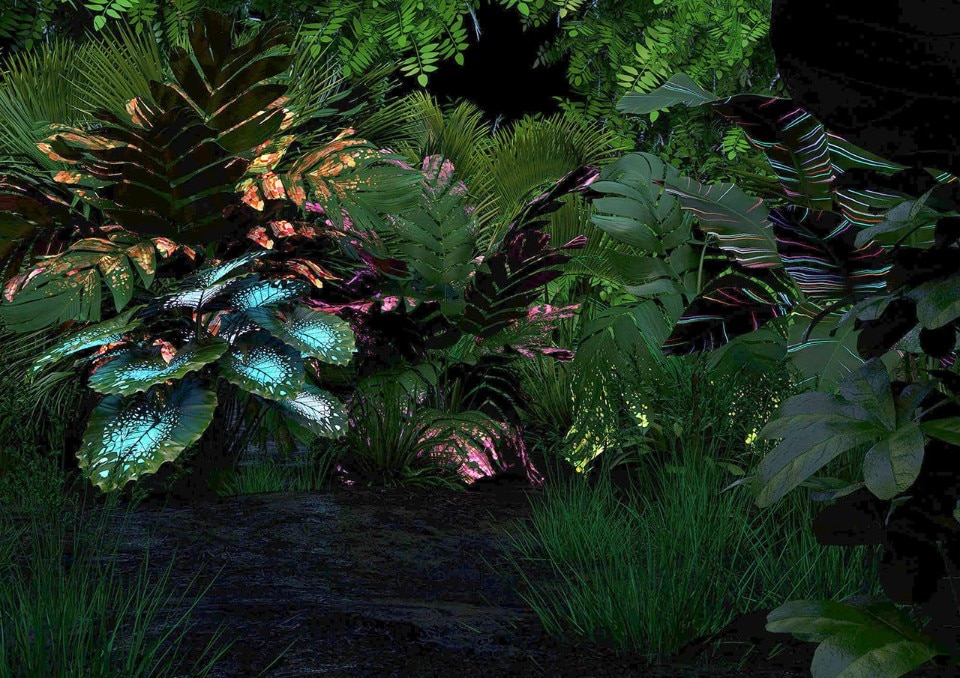
Tetrachromia, PlantsStills
Tetrachromia, a video series seeing nature through the eyes of a bird (animazione: Matt Frodsham).
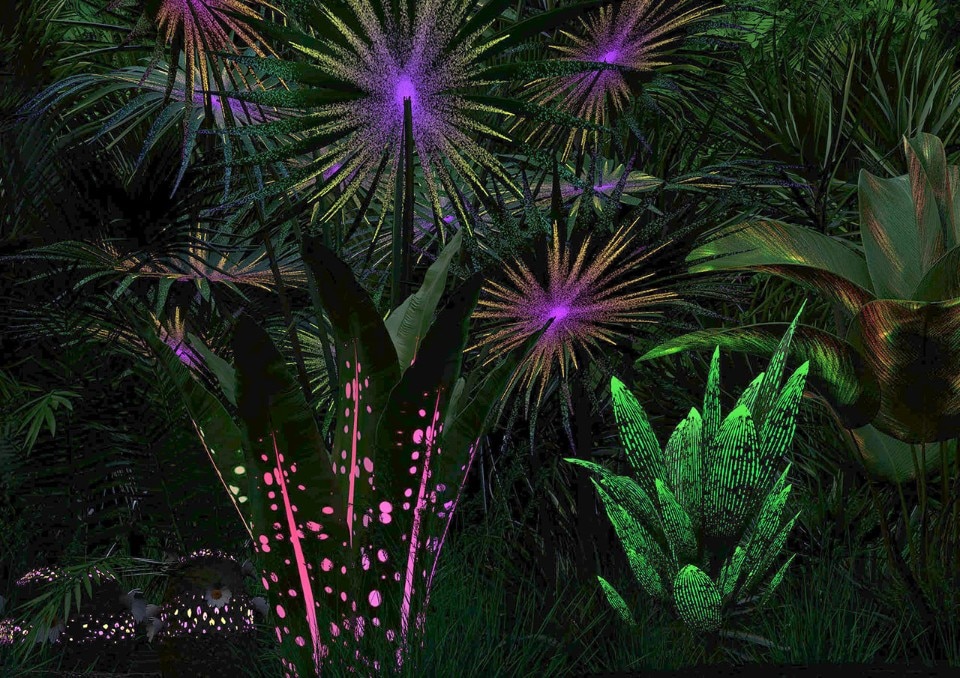
Tetrachromia, PlantsStills
Tetrachromia, a video series seeing nature through the eyes of a bird (animazione: Matt Frodsham).

Tetrachromia, a video series seeing nature through the eyes of a bird (animazione: Matt Frodsham).

Tetrachromia, a video series seeing nature through the eyes of a bird (animazione: Matt Frodsham).

Tetrachromia, a video series seeing nature through the eyes of a bird (animazione: Matt Frodsham).

Tetrachromia, a video series seeing nature through the eyes of a bird (animazione: Matt Frodsham).

Tetrachromia, a video series seeing nature through the eyes of a bird (animazione: Matt Frodsham).

Concept
Tetrachromia, a video series seeing nature through the eyes of a bird (animazione: Matt Frodsham).

Tetrachromia, PlantsStills
Tetrachromia, a video series seeing nature through the eyes of a bird (animazione: Matt Frodsham).

Tetrachromia, PlantsStills
Tetrachromia, a video series seeing nature through the eyes of a bird (animazione: Matt Frodsham).
You work for big companies ruled by commercial inputs. How do you succeed in keeping the right balance between art and marketing?
We see every project as a rich collaboration - between us and a brands values, between us and a beautiful product launch, between us and a cultural space, between us and a museum audience. We choose our clients carefully, seeking progressive brands with authentic purpose - therefore we do not feel there is a compromise between commercial and cultural projects.
You have been described as tecno-optimist. Can you explain to which extend is this definition correct?
I feel that ever-improving technologies offer us positive solutions to some of the worlds greatest problems, from localised solar power and vertical farming, to allowing any creator, anywhere to have a global voice. Statistically the entire population of the world is improving day by day, but the mass media distorts this truth.
How would you describe the job of a (graphic) designer today?
To think beyond the traditional canvas of print design, to enhance expressive communication across the many new screen-based touchpoints which exist in our lives. From smart watch screens, to mobile apps, to augmented reality wayfinding, to architectural video facades…. All need clarity, coherence and surprising new visual engagements.
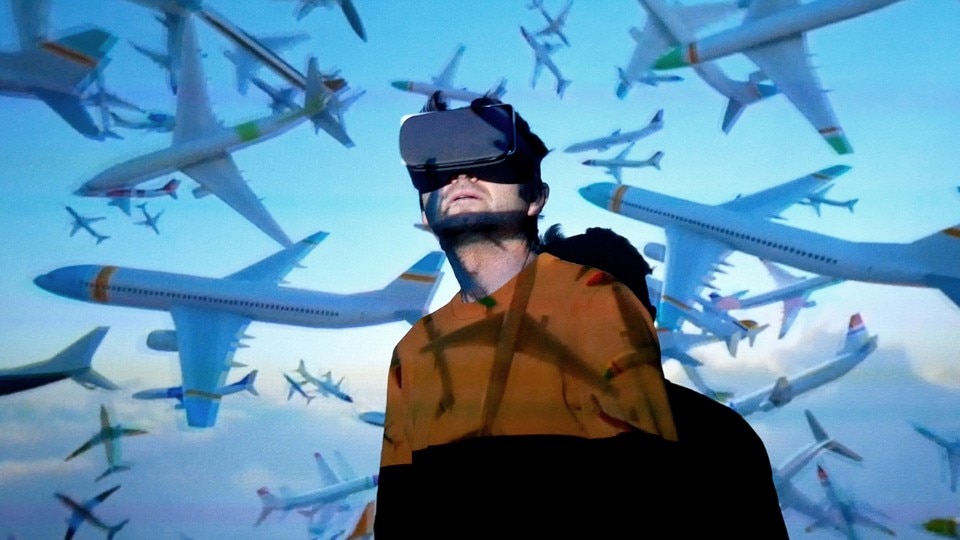
Which are the differences as to design approach in respect to when you began working?
When I started professionally in 1996, I learnt to design and make everything myself. It was hard to find collaborators with complimentary skills. Now, I can design anything at any scale. It is easy to find collaborators worldwide, so we can achieve greater things together.
Do you think that the effectiveness of a professional communication work has diminished with the image bombing we are subject to?
We now live in visually noisy, distracting environments. Finding quiet, emptiness and focus is now a rare luxury. Since Silicon Valley is modelled on consuming our attention, we have to fight against this stream of distraction and media addiction to get some meaningful work done! Personally, I have taken great steps to block out this noise, using a dumb phone, using pencil and paper, quitting my social media. Next we are developing digital products which help people bring more focus into their lives.
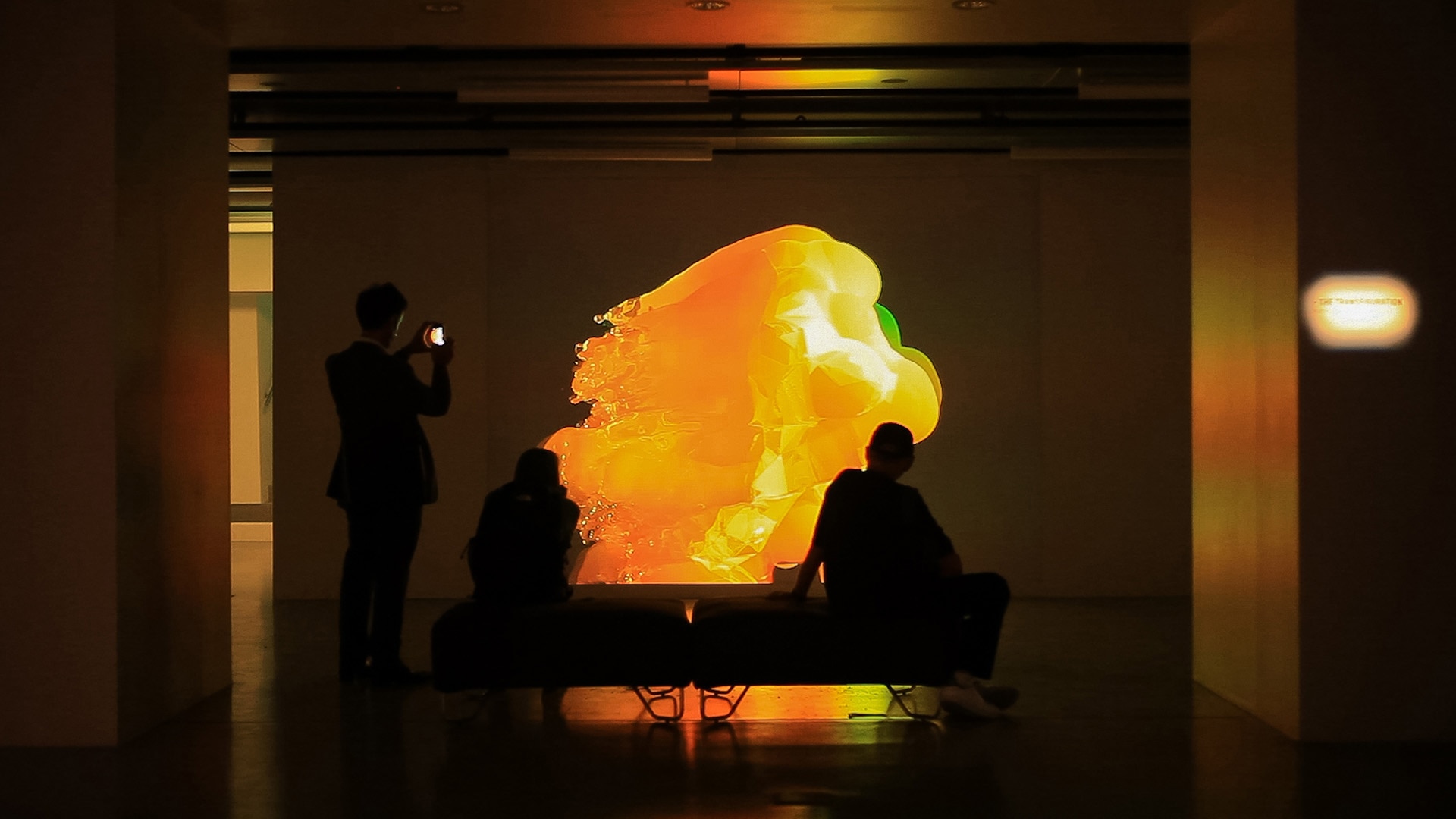
 View gallery
View gallery
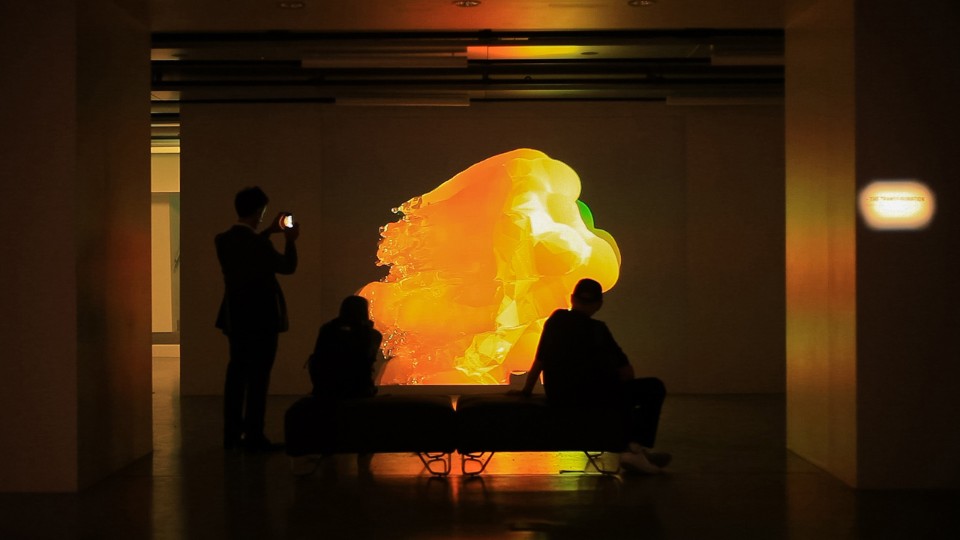
Transfiguration (2011, video stills), for the solo show “Super Computer Romantics” at La Gaite Lyrique digital art museum, Paris.
Photo James Medcraft
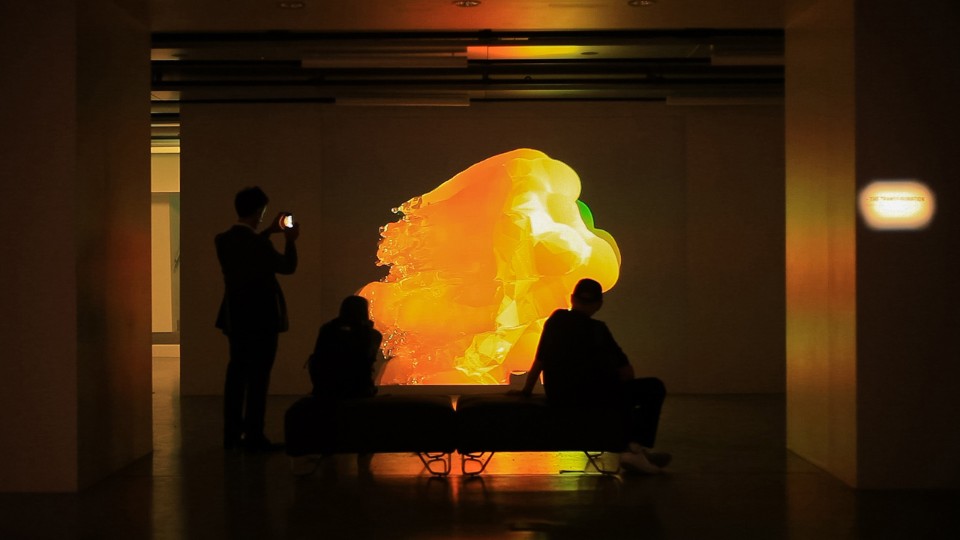
Transfiguration (2011, video stills), for the solo show “Super Computer Romantics” at La Gaite Lyrique digital art museum, Paris.
Photo James Medcraft
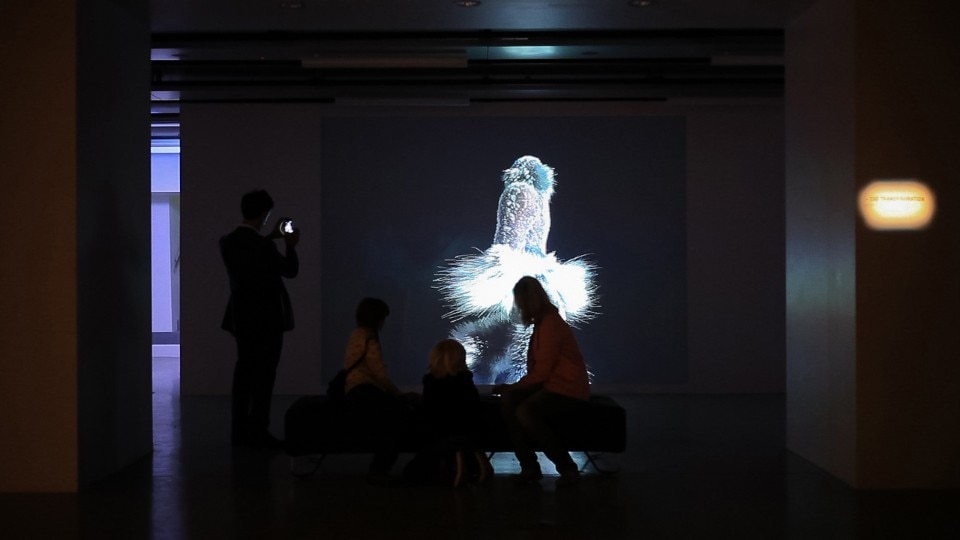
Transfiguration (2011, video stills), for the solo show “Super Computer Romantics” at La Gaite Lyrique digital art museum, Paris.
Photo James Medcraft
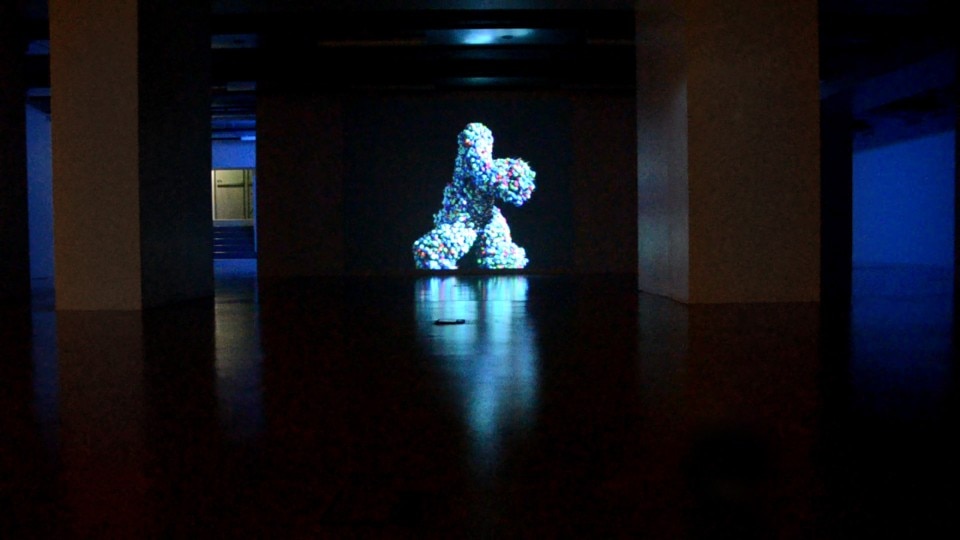
Transfiguration (2011, video stills), for the solo show “Super Computer Romantics” at La Gaite Lyrique digital art museum, Paris.

Transfiguration (2011, video stills), for the solo show “Super Computer Romantics” at La Gaite Lyrique digital art museum, Paris.
Photo James Medcraft

Transfiguration (2011, video stills), for the solo show “Super Computer Romantics” at La Gaite Lyrique digital art museum, Paris.
Photo James Medcraft

Transfiguration (2011, video stills), for the solo show “Super Computer Romantics” at La Gaite Lyrique digital art museum, Paris.
Photo James Medcraft

Transfiguration (2011, video stills), for the solo show “Super Computer Romantics” at La Gaite Lyrique digital art museum, Paris.
Can you name designers who are an important reference for you?
First of all, Zaha Hadid. On my first day of studying Graphic Design I discovered a book of Zaha Hadid’s paintings. I followed her attempts to get something built until eventually the world caught up and she becomes hugely successful. It taught me a lesson on perseverance and believing in your own vision. Then David Hockney. The painter has always embraced and played with new technologies, from polaroids to faxes to iPads to multi-screen video installations. Finally, Olafur Eliasson, creating immersive, multi-sensory experiences with an extremely light touch, but a heavy environmental message. He inspires me to think beyond screens.
Which are the directions you think graphic design should take?
In future, every surface, everywhere could be a screen. These screens need to communicate something. Immersive design has the power to affect people beyond the lobby or the museum, immersive experiences have been proven to aid healing in hospital patients. The potential for our work to have beneficial effects on society is our big passion for the future.
Matt Pyke (Swindon, UK, 1975) studied botanical illustration and technique, and then graphic design. He worked at The Designers Republic (1996-2004) before founding Universal Everything in Sheffield.


